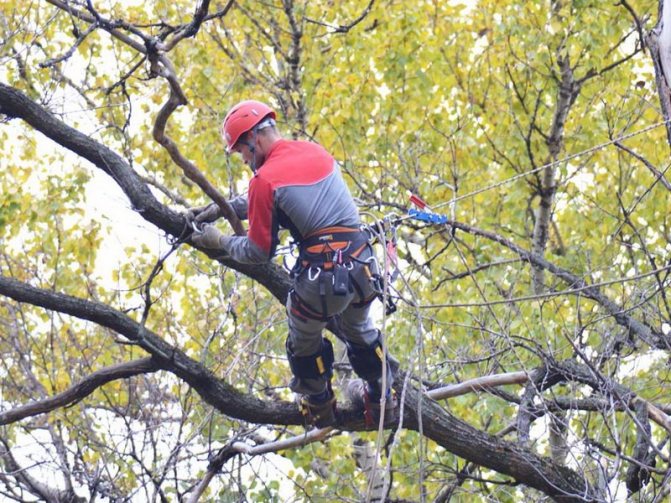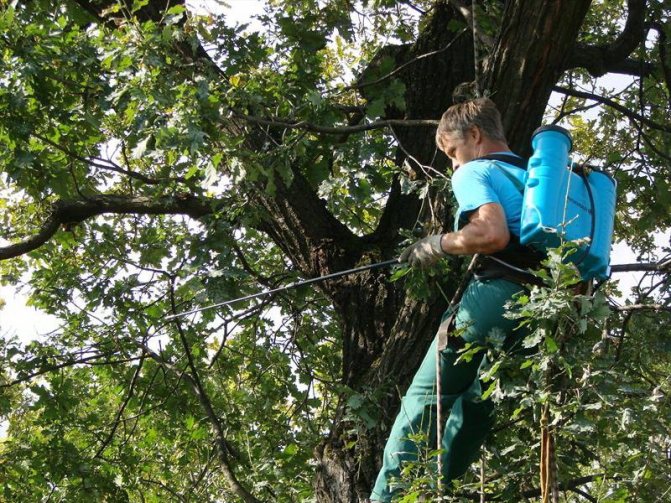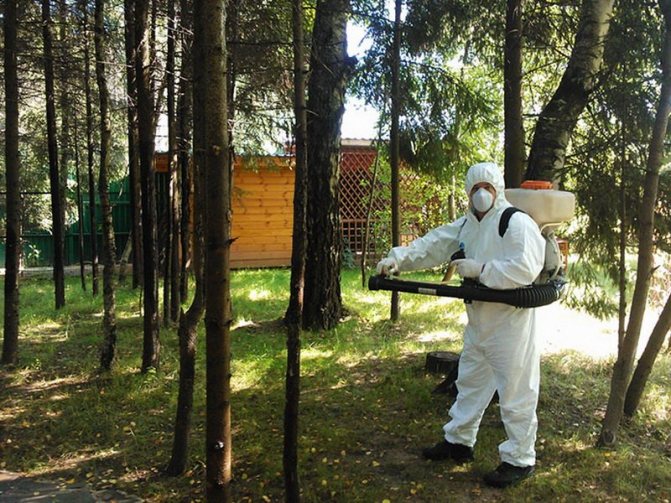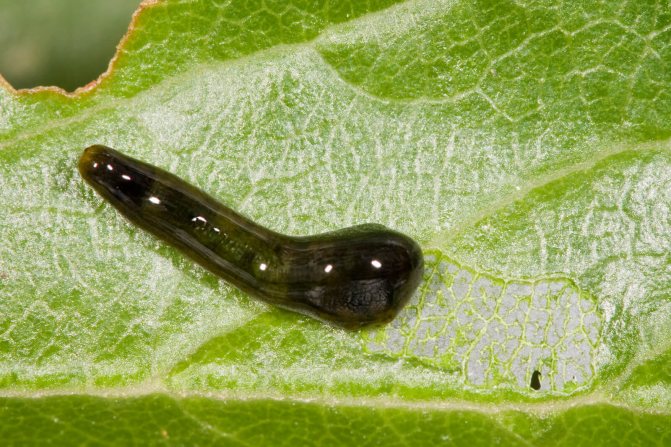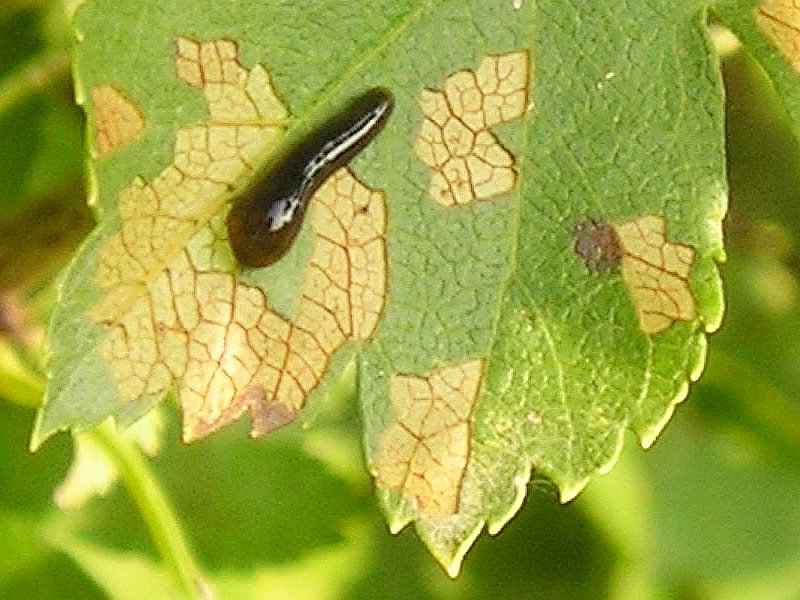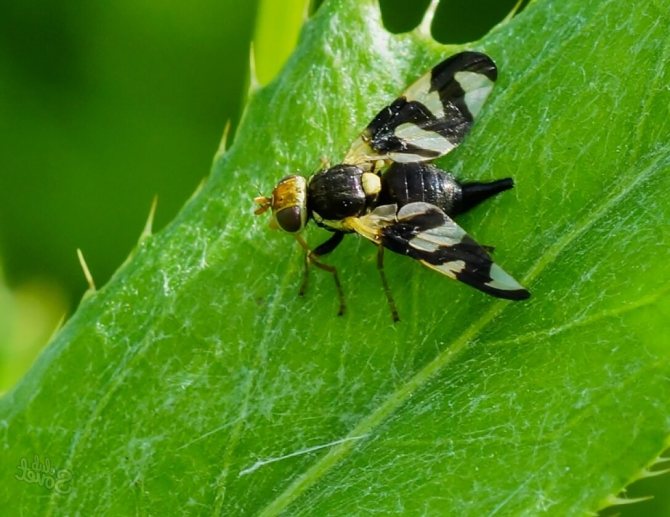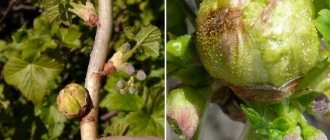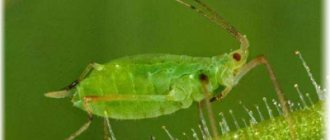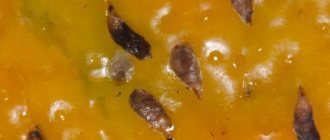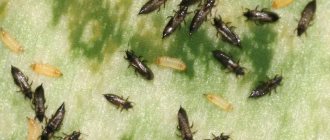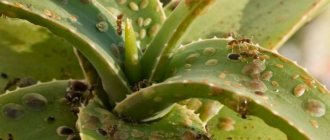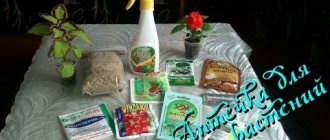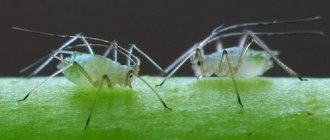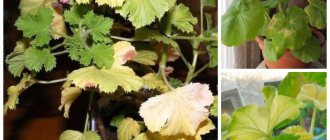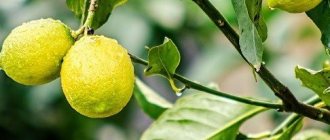It's not a secret for anyone that due to the fault of pests in the garden and garden, summer residents lose a third (and sometimes half) of the harvest. Infectious and fungal diseases of crops contribute to the death of plants and damage to fruits. In order to increase the immunity of cultivated plants and protect plantings from the invasion of pests and diseases, it is necessary to carefully apply agrotechnical methods (timely application of organic and mineral fertilizers, observance of crop rotation rules, use of green manure, etc.), mechanical and biological control measures, as well as to carry out regular treatment of plantings with chemical and natural insecticidal agents.
Most summer residents prefer environmentally friendly and safe methods of struggle. And although the size of the plot often does not allow for the full use of crop rotation or the use of the spatial isolation of individual crops, experienced gardeners are looking for and constantly trying new ways to destroy parasites and pathogens. Naturally, the greatest results can be achieved by applying preventive measures aimed at increasing the ability of garden crops to resist infection and preventing the spread of dangerous insect populations.
Green apple aphid
- The green apple aphid is widespread and is very harmful to young trees.
- Reproducing rapidly, aphids form numerous colonies on leaves and young shoots. Sucking sap out of them, causes great harm, causing stunting and sometimes death of young trees.
- In the northern regions of the Non-Black Earth Region, aphids have 5-6 generations.
Transformation history
“One insect, but it looks different. The larva is in the form of a worm, the adult is a beetle. It's hard to figure it out! "
It is very important at what stage of development the harmful object is. After all, what will lead to the death of the larva will not affect the pupa; what will kill an adult insect will not affect the eggs.
The life of an insect from the moment of birth to death is a chain of various reincarnations or transitions from one phase of development to another. The phases follow in strict order, the duration of each of them depends on the biology of the species and weather conditions. Each phase can be divided into even shorter time periods - developmental stages.
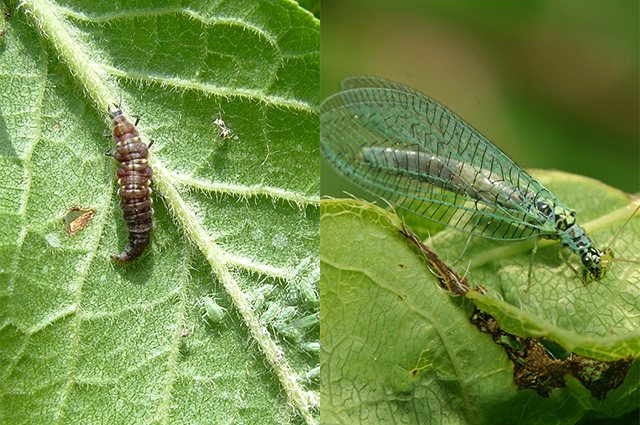
Helpful lacewing: transformations. Photo: AiF / Nina Belyavskaya
There are several types of insect development. The development of those who feed on plant tissues follows one of two options. The first type is called complete transformation. It consists of the following: an adult female lays an egg, a larva emerges from it, grows, turns into a pupa, from which an adult insect appears, and then in a circle. This is how butterflies, beetles, sawflies, flies, etc. live. Insect larvae with complete transformation outwardly do not look like adults at all. For example, in a click beetle they resemble worms (the "wireworm" known to all), in a leaf beetle - on wood lice, in butterflies and sawflies these are caterpillars, etc. And the larvae live in completely different conditions than adult insects. This often makes it very difficult to determine the type of insect.
If there is no pupal phase in the chain of transformations, then this type of development is called incomplete transformation. This does not mean that such insects are somehow flawed.On the contrary! Perhaps the absence of the pupa phase allows them to develop faster and give more generations over the summer. They devour plant parts with appetite, while their competitors lie motionless in the form of pupae. Insect larvae with incomplete transformation differ from adults only in smaller size and underdeveloped wings (bugs, aphids, grasshoppers, etc.). It is easier to identify such pests "by sight", but there is room for mistakes in determining the phase of their development.
An insect larva with incomplete transformation cannot instantly transform into an adult insect. First, she must turn into a so-called nymph, and she already becomes an adult insect. This is how bugs, aphids, beetles, coccids, etc. live. Depending on the type of nymph, it can be brisk and noticeable, or it can lie motionless in a secluded place.
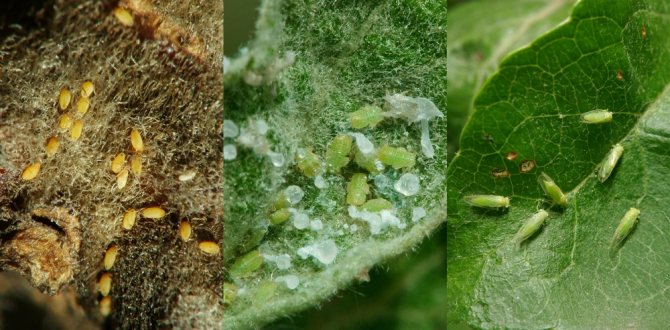

Copperhead (pest): from egg to adult. Photo: AiF / Nina Belyavskaya
Red-gall apple aphid
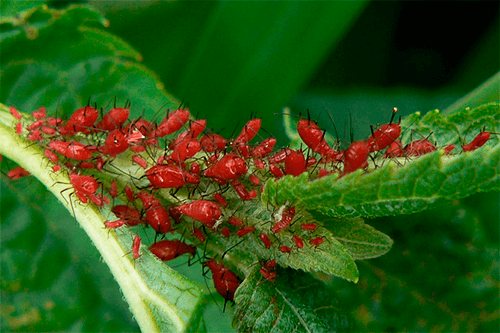

Red-haired apple aphid mainly damages the leaves. They become bumpy, dark red, with edges curled downwards, later the leaves dry up and fall off. Distributed by foci. With a strong infection, trees die.
Control measures
- Against the larvae hatching from the eggs during the budding period and during the growing season, trees are sprayed with a 0.3% solution of karbofos;
- trees against hibernating eggs in the spring, before bud break, are treated with a 3% solution of nitrafen.
Aphid control methods
1. Washing off insects from trees with a stream of water. The effect is partial, not all insects can be washed off and destroyed.
2. Ash and soap solution. Boil one and a half cups of sifted wood ash in a bucket of water for about half an hour, add 50 grams of grated laundry soap to the broth, strain, pour into a spray bottle and generously spray all affected plants. Such treatment is also done to prevent the appearance of aphids. Spraying is repeated at least once every 2 weeks, until the end of the growing season.
3. Fighting ants - carriers of aphids.
4. Infusions of plants with insecticidal properties. The most popular are: onion heads and their husks, garlic, tobacco, chamomile, dandelion, marigolds, sorrel, pine needles, potato and tomato botka.
5. Decoctions of plants: tobacco, yarrow, bitter pepper, celandine, tomato tops, tansy, rhubarb, wormwood, shield bush.
6. Planting next to fruit trees (small islands), berry bushes and in the garden of plants that actively release phytoncides into the air that repel aphids: peppermint, fennel, lemon balm, basil, mustard, coriander, garlic, onions, lavender, marigolds.
Apple honeydew
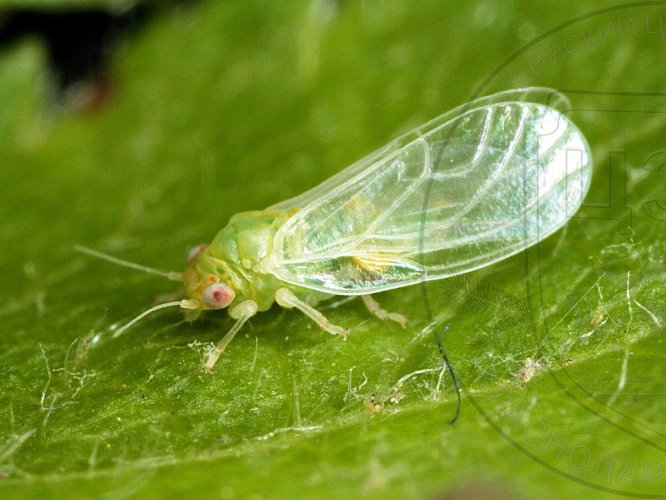

Small yellowish-green insect. The larvae suck the juice first from the blossoming buds, then from the buds. The buds stick together and become covered with droplets of thick, sticky liquid. Damage is massive and causes the ovaries to fall off, fruit underdevelopment, and leaf deformation. The crop can be completely destroyed.
Control measures
- Against the larvae hatching from the eggs during the budding period and during the growing season, trees are sprayed with a 0.3% solution of karbofos;
- trees against hibernating eggs in the spring, before bud break, are treated with a 3% solution of nitrafen.
Chemical methods
It is impossible to limit itself only to mechanical methods in the extermination of insects and in the prevention of their appearance in the garden. Many consider chemical resistance to be the most effective. When using chemicals, you need to be extremely careful - humans are also exposed to poison, not just insects. Some chemicals do not completely degrade by the time they need to be harvested. Responsible gardeners try not to use chemistry, they prefer more sustainable options for confrontation. Chemistry should only be used in critical situations.
Apple comma shield
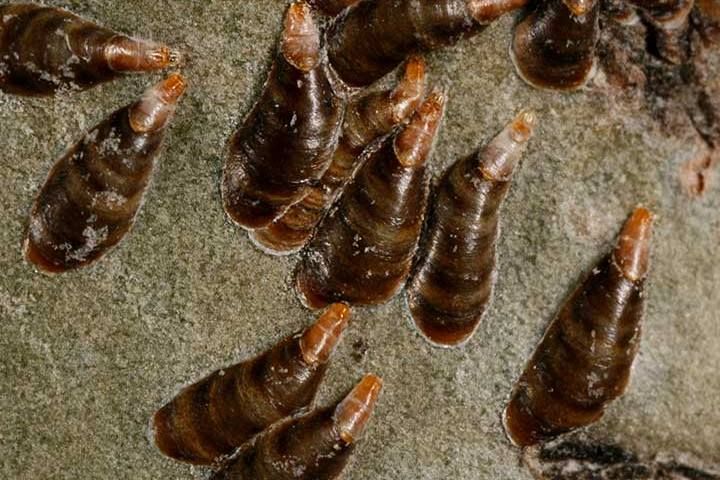

Damages apple, pear, currant.This is a small insect, sitting motionlessly on the bark, covered with a dense shield, resembling growths. With a sufficient amount of heat and moisture, branches and trunks, and sometimes leaves and fruits, are completely covered with shields. Affected branches stop growing, fruit buds are not laid, and if severely damaged, the tops of trees dry out. Plants are greatly weakened, lose winter hardiness. Distributed everywhere in gardens, parks, forests, but especially dangerous for the apple tree.
Control measures
- Before bud break, trees are sprayed with 3% nitrafen solution or 3-4% oil-oil emulsions;
- immediately after flowering, a 0.3% solution of karbofos is used against young larvae.
Mushrooms
Mushrooms appear and spoil certain wood, therefore they have a corresponding name.
Oak tinder fungus, spoils living trees, white rot appears on them.
Also, there is a pine sponge, it is the most dangerous species. The lamellar fungus destroys the core of the tree.
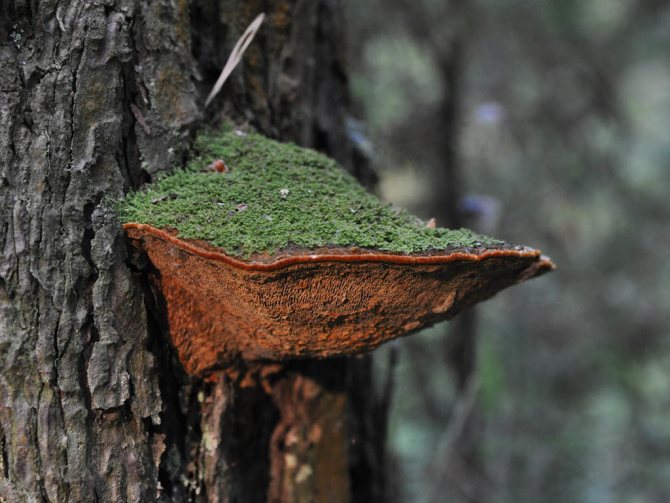

Insects
Damage to trees is caused by the larvae of the following insects:
Lepidoptera, namely butterflies - pine and gypsy moth, nun, these are the most dangerous insects for trees, pine - spoils
pines, unpaired silkworms are more deciduous trees, less often conifers, and a nun most often affects spruce, sometimes other coniferous and deciduous trees.
Also, insect larvae, such as lumberjacks or longhorns, bark beetles, weevils, wireworms, horn-tails, cause harm.
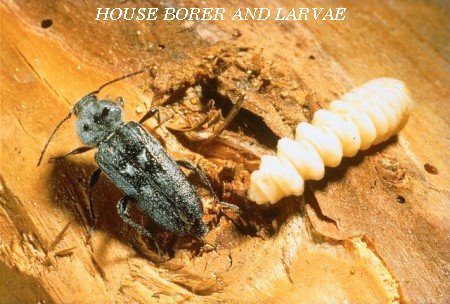

Red apple mite
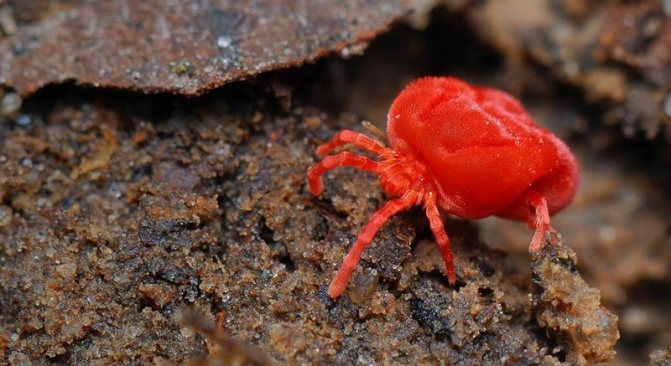

Harmful to apple, pear, plum, cherry, mountain ash, hawthorn. The body shape of the tick is oval, up to 0.6 mm long, reddish in color. On the back of the leaves, red moving dots are clearly visible. The larvae suck the juice from the leaves. Damaged leaves discolor and fall off prematurely, resulting in underdeveloped fruits and an increase in the number of carrion
Control measures
- Spraying in the early spring period before bud break with 3% nitrafen solution (300 g per 10 l of water) or oil-oil emulsion (400 g per 10 l of water) to destroy hibernating eggs;
- during the growing season, spraying with a solution of rovikurt (10 g per 10 l of water) or anometrine-N (10 g per 10 l of water), or green soap (400 g per 10 l of water).
Spider mite
Insect 1-2 mm in size, green, reddish or whitish shade, the greatest trouble brings fruit trees (apple trees, pears), raspberries, strawberries, currants, cucumbers, bell peppers, decorative flowers. Sometimes a spider mite can choose a vineyard as a place of residence. Most often it parasitizes in greenhouses. In open beds, insects appear in the second half of June. The greatest increase in the population is possible under favorable conditions for insects - heat, drought, lack of watering.
Apple blossom beetle
The beetle is up to 4.5 mm long, brownish-gray in color, with oblique light stripes on the elytra. The larvae are yellowish white with a dark brown head. Beetles feed on buds in early spring. They can bite deep enough into the buds, buds, fruits, eating out the rudimentary leaves, flowers, fruit pulp. Damaged buds do not bloom, turn brown and dry up, becoming like small brown caps. Apple trees, badly damaged by the flower beetle, look as if burnt.
It occurs everywhere, especially in years with a cool, protracted spring, when the flowering of trees is delayed. In such years, the insect can completely destroy the buds, and therefore the entire crop.
Control measures
- During the budding period and after flowering, trees are treated with a 0.3% solution of karbofos (75-90 g per 10 liters of water).
2.Bear
This type of insect is dangerous because it feeds on many types of plants. The size of the bear can reach 5 cm. Insects live in the upper layers of the soil in burrows, and besides, they easily tolerate flooding.Medvedka is capable of flying, but only at night and over short distances. The insect harms plants when it settles underground and gnaws at their roots. In addition, at the end of summer, they can settle in the roots of garden plants, thereby causing great harm to agriculture. It poses the greatest danger in early spring, when it destroys young plants.
Corrosive arboreal
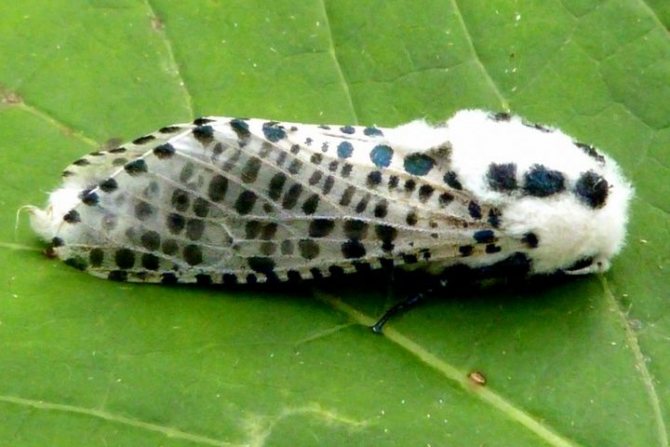

Caterpillars of yellowish-white color with black warts in the form of dots and a black shiny head are harmful. The most harmful is apple, mountain ash, lilac. Caterpillars gnaw passages under the bark in the wood of branches and trunks, as a result of which sap flow is disrupted, branches dry up and break off, trees get sick and die prematurely.
Control measures
- It is difficult to fight the corrosive arboreal tree, since the caterpillar is inside the shoot;
- the affected branches must be cut and burned.
How many are there?
"How many of them!"
It is clear that when the enemies are so numerous and varied, it is very difficult to fight them. In order to develop a pest control strategy, we need to understand the way they exist and find the “weak points”.
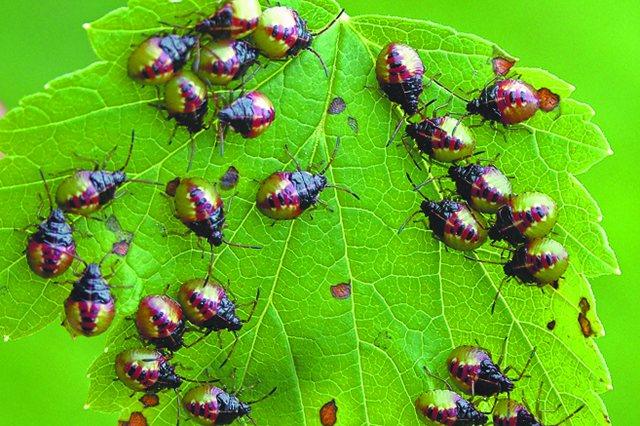

Hipster bug larvae at an early stage of development. Photo: AiF / Nina Belyavskaya
Nobody knows exactly how many species of insects live on Earth. Assumptions usually point to myriad hordes (2 to 8 million) of species. About one million have been reliably described so far. At least 7000–7500 new species of insects are discovered annually. By the way, not all of them are numerous - some are known from finds from only one locality or even from a single specimen.
If we proceed from the modern classification and the criterion of "harmfulness", then we will count more than 700 thousand species of insects. Let's not take into account the pests of food stocks or equipment, parasites of humans and warm-blooded animals, and leave only those who, feeding on various parts of plants, reduce the yield or worsen their appearance. All the same, there remains a significant figure - about 250 thousand species. This is really a lot!
Despite the size and diversity of the "enemy army" of insects, it is possible and necessary to contain its onslaught. To do this, it is necessary to understand how our "opponents" live, at what time they are invulnerable, and when they can be taken by surprise.
The hawthorn flies in flocks. Photo: AiF / Nina Belyavskaya
Leaf rollers
Rose and kidney leaf rollers are harmful. These are small butterflies (1.4-2.5 cm) of yellowish gray color. They damage caterpillars up to 20 mm long, very mobile, nimble (when touching the caterpillar, it backs up and, falling, hangs on the cobweb).
Rose leafworm, in addition to the apple tree, affects pear, black currant, gooseberry, ornamental shrubs. Caterpillars gnaw out buds, buds, flowers, leaves twine and pull together with cobwebs in a ball and in such a nest eat them, also eat out the pulp in the ovaries of the fruit.
The budworm damages the apple tree, pear. Caterpillars in the spring eat up the buds, and then inflorescences and blossoming leaves, entwining them with cobwebs and rolling them into lumps. Damaged leaves turn brownish in color and dry out.
Leaf rollers significantly reduce the yield during mass development.
Control measures
- Before budding begins, the trees are sprayed with an oil-oil emulsion (300-400 g per 10 liters of water);
- immediately after flowering, bitoxibacillin can be used (40-80g per 10l of water);
- spraying with a 3% solution of nitrafen is used against hibernating eggs.
4.Mole
This small butterfly is also a garden pest. It infects the leaves of young plants. Gardeners count many types of moths: grape, currant, raspberry, apple, cabbage, ermine, miner, moth, fruit, crumb and baby. These insects lay eggs on leaves, which completely eat up the caterpillars hatched from them.This causes enormous damage to plants and reduces their fertility. With a large accumulation of moths, the yield loss can be 60%.
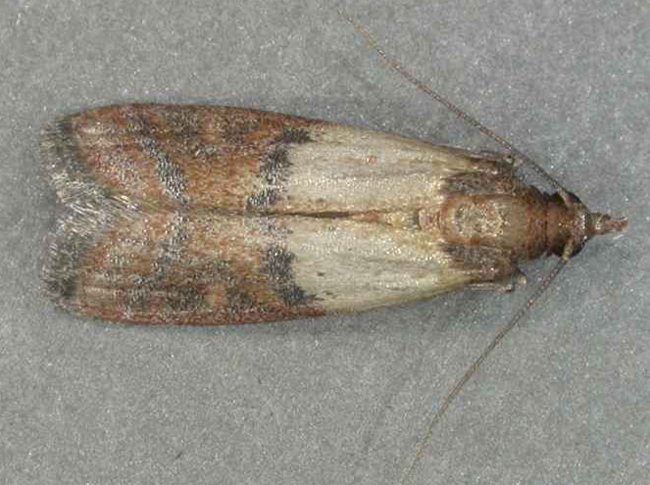

Apple moth
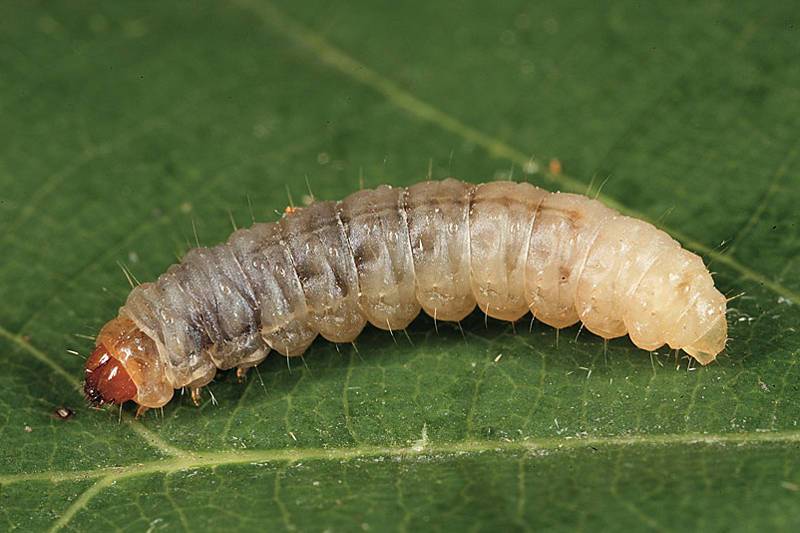

Small gray butterfly, wingspan up to 18mm. Damaged by a yellow-white or pinkish caterpillar with a brown head, apple fruits, less often pears. Caterpillars emerge after flowering and bite into the flesh of the fruit. Having penetrated into the seed chamber, they eat away part of the seeds. As a result, damaged fruits lose their market value and are not suitable for storage. In some years with dry summers, the moth destroys up to 50-60% of the crop.
Control measures
- Trees are sprayed with solutions of anometrin-N or rovikurt (10 g per 10 l of water) - the 1st spraying is carried out when a petiole fossa is formed in Antonovka fruits (10-15 days after the end of flowering), the 2nd - 18-20 days after the first;
- in addition, it is necessary to systematically remove carrion, clean and burn dead bark from boles and skeletal branches in autumn, and disinfect containers.
An old way of fighting the moth. In May, on the apple tree closer to the trunk and to the lower branch, hang 2-3 jars on a string (you can from under mayonnaise), half filled with bread kvass. Take out the moth periodically with a spoon.
Younger and older
“The instructions for the preparations often say: effective against young larvae. Or the dosage is given for some ages. What age are you talking about? "
The effectiveness of the fight against harmful larvae strongly depends on what period of development they are in.
At the appointed time, a creature, a larva, quite ready for environmental conditions, emerges from the egg. She is very voracious and starts eating almost from the moment of her birth.
For herbivorous insects with a gnawing mouth apparatus, it is characteristic that their larvae, after leaving the egg, first of all, almost completely eat its shell. They do this not only to hide the traces of their appearance. The shell contains many proteins that will keep the larva alive until it finds food. Often, due to the high abundance or small amount of food, the females lay eggs quite far from the plants intended "for lunch" for their offspring. In this case, it takes the larva a long time to get to the "dining room", so it is vital for it to have a snack at least with the shell of the egg.
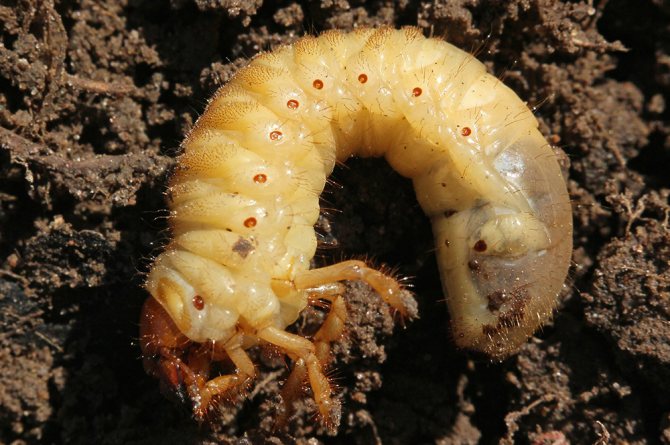

May beetle (larva). Photo: AiF / Nina Belyavskaya
There are pests that spend more than a year or even several years in the form of a larva. This is usually characteristic of large insects or those that spend this phase of development in water or soil. So, the larvae of the May beetle take two or three years to develop, depending on the weather, and the larvae of the seventeen-year-old cicada develop for almost 17 years. And this does not mean at all that the owners of the plants can rest all this time. The larvae eat and grow every day! The more they grow, the more they eat. And, if you realized late, the damage can be colossal.
The development of larvae is also accompanied by transformations - periodic molting (shedding of covers). Due to this, they can grow in size and change. The period of life between molts is usually called age. Insect larvae usually have several ages (stages of development). There may be two or more than ten. The age of the larvae is most accurately determined by the width of the head capsule (body length is an unreliable indicator: a newly shed specimen is exactly the same length as before molting). In addition, the larvae may change color or structural features as they move into the next age.
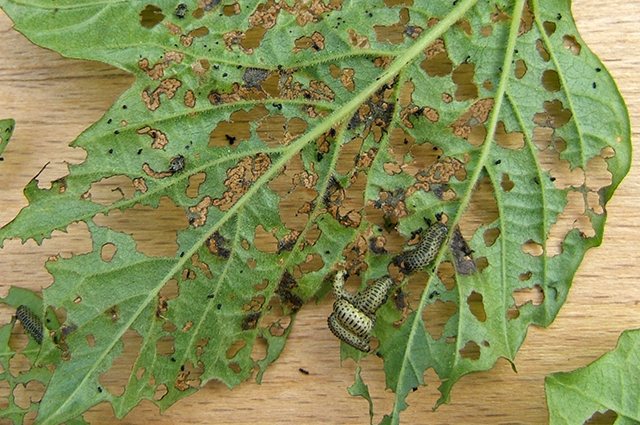

Viburnum leaf beetle. Photo: AiF / Nina Belyavskaya
How to fight?
With a small number of larvae, manual collection, shaking off the branches of plants (as a rule, in the lower part of the crown in a tall plant and entirely in shrubs and young trees) is possible on the litter, as well as the use of hunting belts.With an average and high number of pests, biological products or pesticides should be used, strictly adhering to the permitted technology and frequency of use. An important detail: the highest efficiency when using these drugs is observed when processing young larvae (up to the 3rd inclusive). If you find on your site the larvae of scoops, moths, wolfflies, try to determine their "age category" with the help of reference literature. In the case when the larvae have already reached the 4th-5th instars, the processing will turn into a waste of money, time and effort - 20-50% of the total number of them will die. The rest will pupate and, although they will have health problems, will turn into adults and give fertile offspring.
Apple sawfly
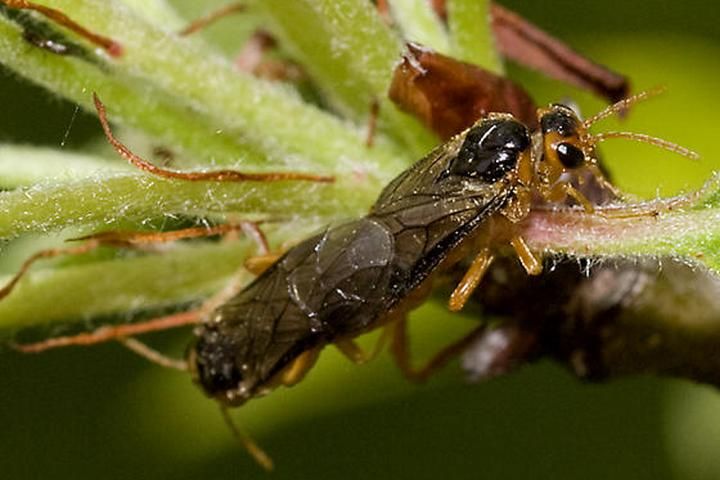

Hymenoptera, 6-7mm in size, resembling a slowly flying bee. In favorable years, 25-40% of fruits can be damaged (early carrion). The larvae are harmful. On small ovaries the size of a walnut, the caterpillars make long narrow passages under the skin of the fruit, eating out the entire core of the fruit (in contrast to the moth, which eats up part of the seeds). The fruit is filled with wet brown excrement with an unpleasant odor, reminiscent of the smell of bedbugs.
Control measures
- Spraying before flowering in the budding phase of buds with a 0.3% solution of karbofos;
- the autumn digging of near-trunk circles and the processing of row spacing contributes to the death of a significant number of sawfly caterpillars.
Willow diseases and how to spray trees
The following describes how to spray a willow tree (SALIX) against diseases.
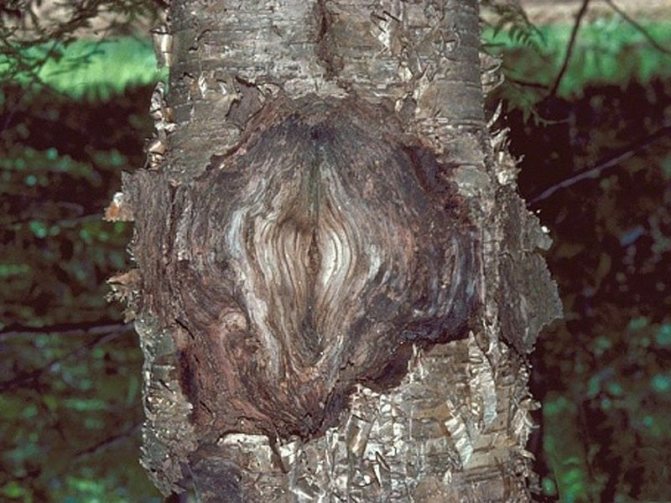

Staggered (ordinary, noncritical) cancer... The causative agent - the fungus Neonectria galligena - causes the formation of multi-stage cancerous wounds on the trunks and thick branches. The fungus of the pathogen develops in bark and sapwood for many years. In this case, the affected wood dies off, and the healthy tissues adjacent to it grow vigorously, forming nodules in the form of rollers. The developing mycelium penetrates the healthy tissues of the influx, causing them to die off. A new influx arises nearby, which is also affected and dies off.
Control measures. Pruning branches, removing dead trees. The ulcers are cleaned, disinfected with a 35% solution of copper sulfate, and covered with oil paint. To protect these trees from disease, treatment is carried out before leafing out with Bordeaux mixture or its substitutes.
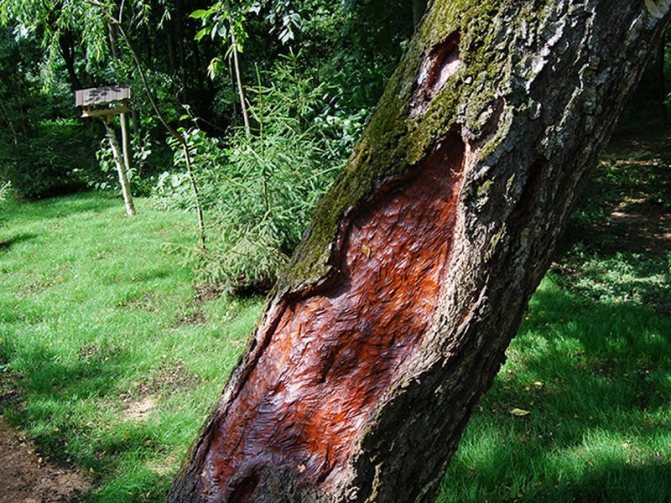

Cytosporosis. The causative agent, the fungus Cytospora chrysosperma (Pers.) Fr. The affected bark gradually dies off, individual branches and trees dry out.
Control measures. Removal of dead branches and trees. Preventive and eradicating spraying of trees before leaf blooming with Bordeaux mixture or its substitutes.
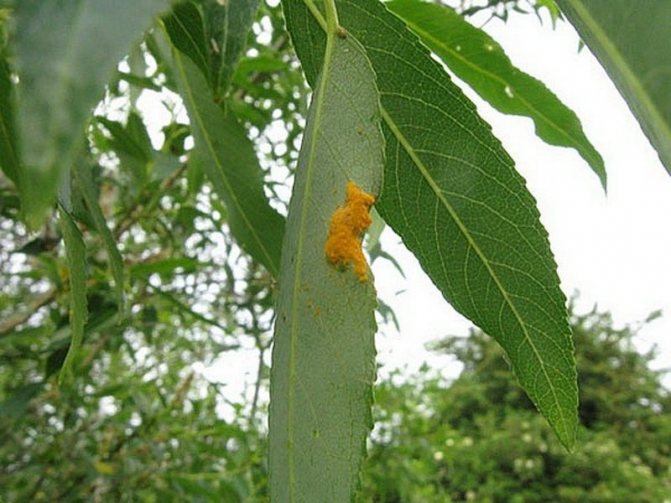

Rust. The causative agent is the mushroom Melampsora salicina (Lev.) Kleb. - causes the formation of yellow-orange sporulation pads on the underside of the leaf, covering the entire surface. The mushroom is of various types, intermediate hosts can be onions, larch, currants, euonymus. With severe damage, decorativeness decreases and premature leaf fall is observed.
Control measures. Collection of plant residues, preventive spraying in spring with Bordeaux mixture or its substitutes.
These photos show how trees are treated for diseases:
Apple moth
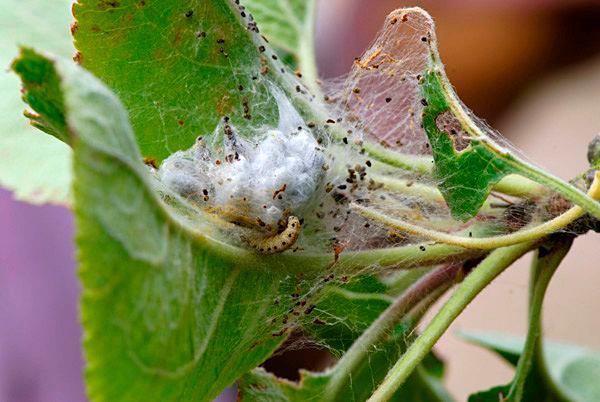

The butterfly is silvery-white, with a wingspan of up to 20mm. Caterpillars are harmful. In the spring, as soon as the leaf buds bloom, the caterpillars come out from under the scutellum, penetrate into the leaf and eat away the flesh without affecting the upper and lower skin. Damaged leaves turn brown and dry out. Then the caterpillars spread out and, settling on separate leaves in colonies, tighten them with cobwebs from above and eat up all the pulp of the leaf without affecting the veins.Having destroyed one branch, the caterpillars crawl to the next, covering the tree with spider nests. As a result of damage to the leaves by the apple moth, the ovaries of the fruits crumble, the fruit buds are not laid.
Control measures
- Before flowering, spray with a solution of karbofos (60 g per 10 l of water);
- after flowering, bitoxibacillin is effective (40-80g per 10l of water);
- early spring spraying with 2-3% nitrafen solution also destroys a significant part of the caterpillars of the apple moth.
Diseases and pests of fruit trees and their treatment
To learn to distinguish between diseases of fruit crops, study the signs of each disease.
Cherry weevil
Cherry weevil. A bronze-green beetle with a golden crimson sheen. Hibernates in soil at a depth of 5-15 cm. In spring, it gnaws at buds, flowers, leaves, ovaries. When the fruits begin to color, the female gnaws the flesh to the bone and lays an egg. The larva penetrates the bone and feeds there for a whole month, and then goes into the soil, pupates, turns into a beetle and hibernates.
Apply adhesive catching belts to the booms. Before flowering, in the morning, shake off beetles numb from the cold on the bedding and destroy.
Gum therapy
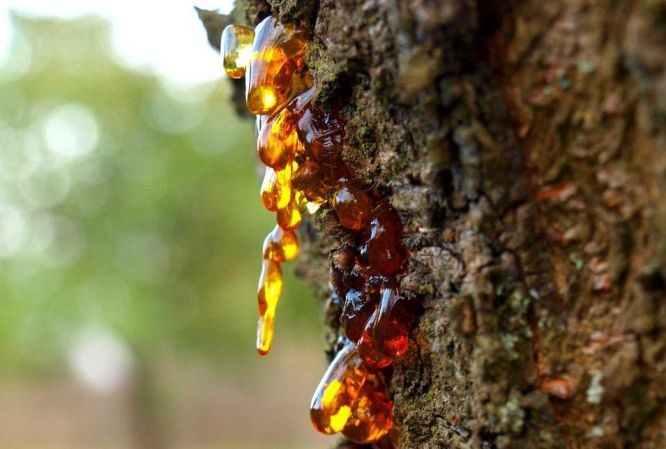

Gum therapy is a non-infectious disease of weakened cherry, plum and other stone fruit trees.
Remove the influx of gum, disinfect the wounds with a 1% solution of copper sulfate and cover with garden varnish.
Coccomycosis
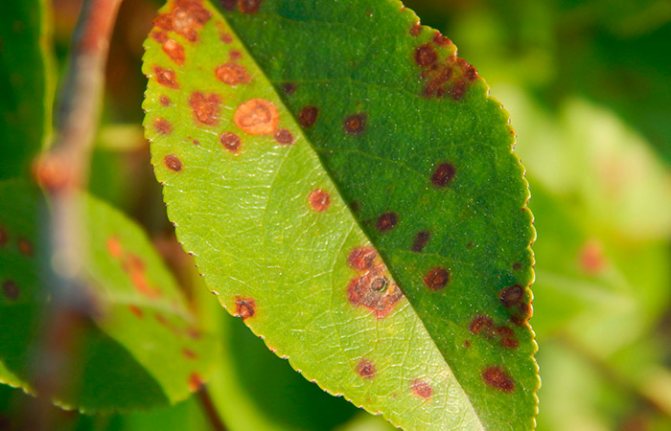

Coccomycosis affects the leaves and fruits of cherries, plums and other stone fruits. The fungus hibernates on fallen leaves. In the spring, the wind blows spores. First, reddish-brown dots appear on the surface of the leaves, then they merge and grow into spots. A pinkish-white bloom forms on the underside of the leaves. At the end of July, diseased trees can shed up to 80% of their leaves. On fruits, depressed brown spots with a whitish bloom appear.
Treat the plants with a Bordeaux mixture: the first time in the green cone phase (4% solution) or bud extension (2%), the second time immediately after flowering (1%) and the third time after 2 weeks (1% ). In autumn, spray the soil under the tree crowns and fallen leaves with a 7% urea solution or 10% ammonium nitrate solution.
Leaf rollers
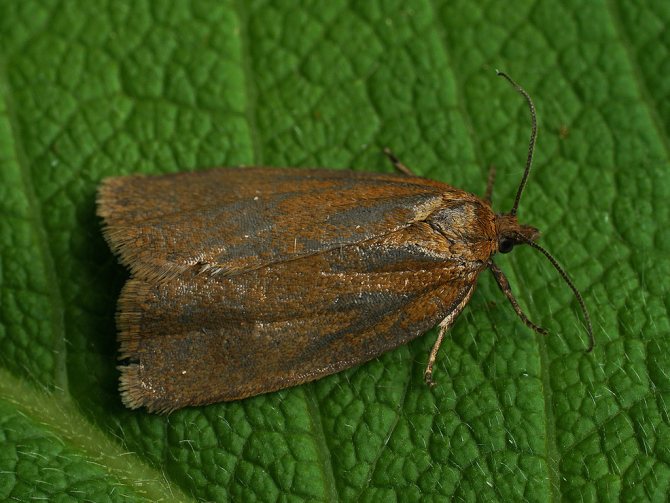

Leaf rollers have more than 20 species of small (up to 20 mm) green, yellow, brown caterpillars; they are found in gardens all summer. They gnaw narrow passages and large depressions in the kidneys. They eat buds and flowers. They gnaw holes in the fruit. They feed in the folds of the edges of the leaves or between the leaves, fastened by a cobweb. They overwinter in fallen leaves, the upper layer of the soil, cracks in the bark, and places where fruits are stored.
In early spring, during the budding period and immediately after flowering, spray the plants with tobacco, makhorka, yarrow or wormwood infusion.
Lichens
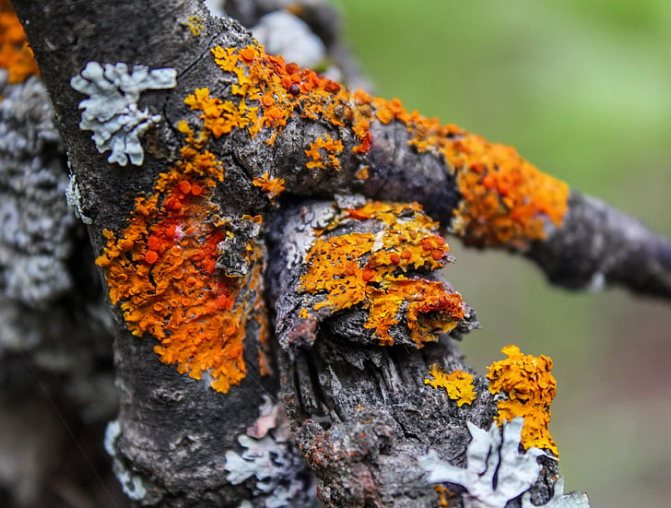

In gardens where it is dark and damp, the trees are usually full of lichens. Lichens do not suck anything out of the plant. Their harm is that pests hide in them, and the infection persists.
You can remove lichens mechanically, you can sprinkle the plants with a 3% solution of ferrous sulfate.
Medianitsa
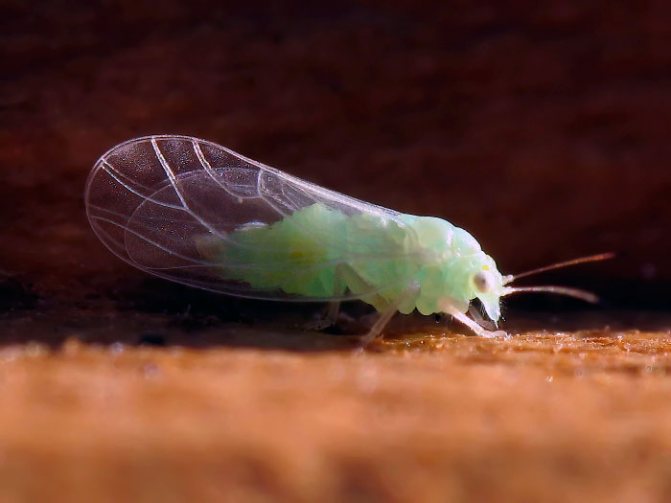

When the buds open, sucker larvae appear. They suck the juice from leaves and flowers, pollute them with sticky secretions, on which a sooty fungus settles. By the end of flowering, the larvae turn into jumping insects. At first, they live on the apple tree, then they move to weeds, and in August they return to the apple tree and lay eggs, which winter in the folds of the bark near the buds.
During bud break, sprinkle the plants with infusion of yarrow, ash, tobacco or makhorka. Adult copperheads can be destroyed with tobacco smoke.
Milky shine
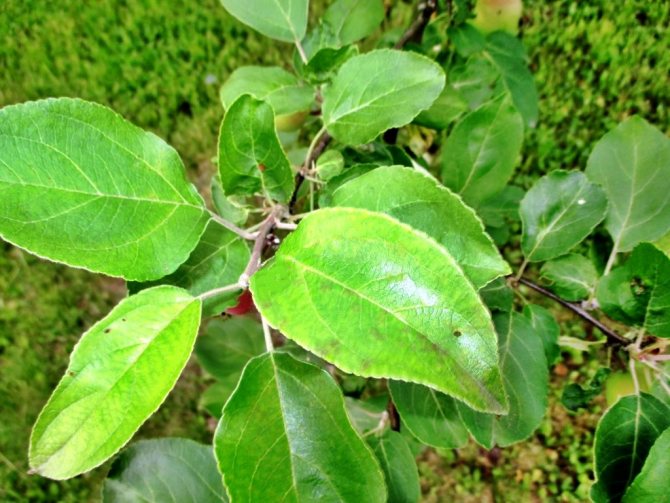

Milky shine is a disease that affects frozen trees. Leaves on individual or all branches acquire a whitish color, become brittle, blacken and dry out. On the bark, gray on top and purple on the bottom leathery mushrooms settle. Later they turn brown on the apple tree, and turn orange on cherries and plums.
Prevent freezing of trees. Frost holes must be removed to healthy bark tissue, and the wounds must be washed with 3% copper sulfate. The branches affected by the milky sheen should be cut out, and the wounds should be covered with garden varnish. If the tree is badly damaged, you will have to uproot it.
Moths
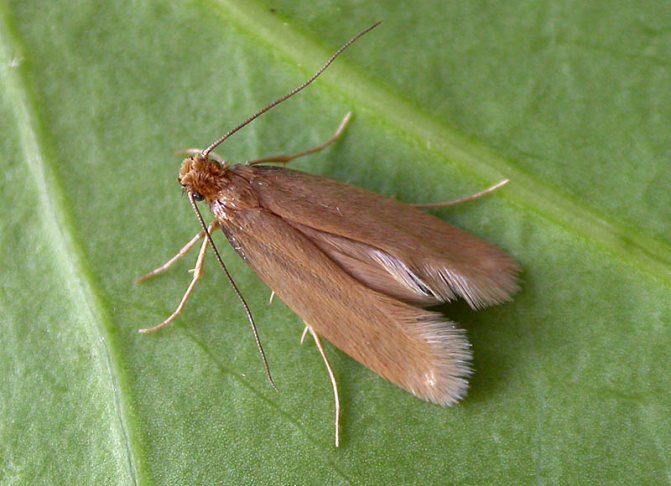

Moths are small nondescript butterflies fluttering in unkempt gardens all summer. There are mining moths, kidney moths, spider moths and leaf-rolling moths. Caterpillars of some species of mining moths constantly live and feed in mines, others - first feed in mines, then come out of them and eat leaves.
In early spring, the caterpillars of the bud cherry moth gnaw the buds or eat them from the inside, and later feed on the shoots. The spider nests are inhabited by the caterpillars of spider moths. There they eat leaves and pupate. Caterpillars of the apple-leaf moth move from leaf to leaf, bend their edges, pull together with cobwebs and skeletonize.
Destroy moth nests. Treat plants with infusions of tobacco, makhorka, yarrow, wormwood.
Mouse
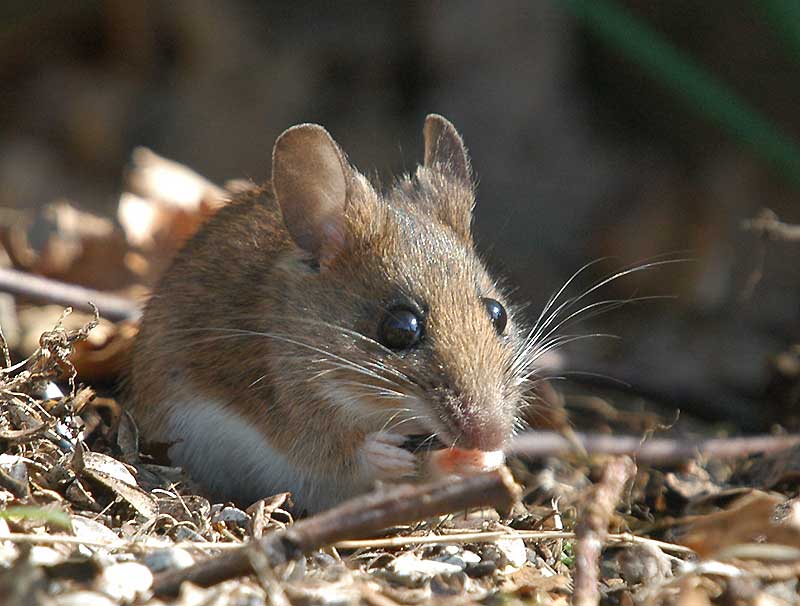

Mice do not hibernate. Closer to spring, in search of food, they gnaw the bark of young trees.
For the winter, tie the tree trunks with a special harness, tar paper, nylon cloth, spruce branches. Leave no gap between the harness and the soil. Beginning in February, pack snow around young trees.
Scab
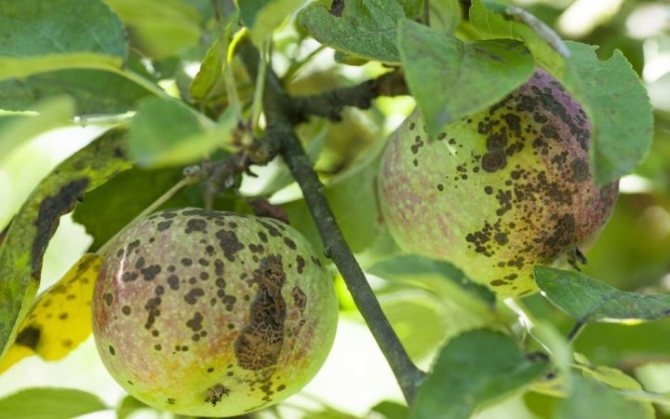

The scab causative agent hibernates on fallen leaves. In spring, small light green oily spots appear on young leaves of diseased trees. Later, they become covered with a brownish-olive velvety bloom. Rounded dark spots with the same bloom are formed on the fruits. In places where the fetus is affected, tissues become corky, cracked and rotted.
Create good air and light conditions in the garden and in the tree tops. Do not apply too much nitrogen fertilizer. Treat diseased trees with a Bordeaux mixture: for the first time in the green cone phase (4%) or bud extension (2%); the second time immediately after flowering (1%); the third time 2 weeks after the second treatment (1%). In autumn, sprinkle the soil under the tree crowns and fallen leaves with a 7% urea solution or 10% ammonium nitrate solution.
Sawflies
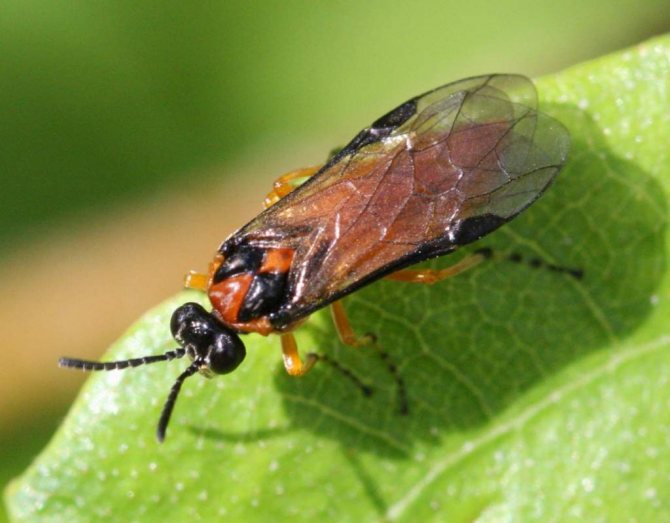

Sawflies
The sawfly larvae overwinter in the soil on a turbine of 15-25 cm. Adults of the apple fruit sawfly fly out {before the apple tree blossoms. During the flowering period, the females lay eggs one by one inside the fetus. The larvae penetrate the seed chamber and completely eat it away. Damaged fruits fall off, and the larvae rise into the crown and penetrate into another fruit or go into the soil.
The females of the black sawfly fly out before the flowering of plum, cherry-plum, and blackthorn. They lay their eggs in the calyx of buds or flowers. The larvae that appear eat the flesh of the ovary, filling the holes with dark secretions. Damaged ovaries fall off. After finishing feeding, the larvae go into the soil. Females of the cherry slime sawfly lay eggs inside the leaves at the beginning of their blooming. Leech-like larvae skeletonize leaves until early July and go into the soil.
Put trapping belts on the tree trunks, dig up the soil in the near-trunk circles in the fall. Cherry sawfly larvae can be shaken off and destroyed, and their clusters should be treated with a decoction of tomato tops, infusion of wood ash or mustard.
Apple moth
Caterpillars of the codling moth overwinter in the upper layer of soil, cracks in the bark, packaging material, and premises where they were stored. fruit. After flowering, butterflies fly out and lay eggs. Caterpillars appear after 15-20 days. They penetrate the seed chamber and eat only part of the seed. Therefore, many damaged fruits hang on the tree before being picked. If the fruit is fallen, the caterpillars either climb into the crown and penetrate into the next fruit, or go to pupate.
After flowering, put glue trapping belts on the stems.Hang jars with bait mixtures (kvass, fermented compote or water with a small amount of vegetable oil) in the crowns. Spray the trees with a decoction of tomato tops or infusion of wormwood 2-3 weeks after flowering and repeat 2-3 more times with an interval of 5 days. Collect a wormy carrion and recycle immediately. Disinfect containers and crop storage areas.
Moths
There are about 20 species of moths in our gardens. In females, wings are underdeveloped, therefore, from wintering places into the crown, they crawl along the trunk. Caterpillars are naked, smooth. The color is brown, gray, bluish, yellowish with a pattern in the form of stripes, strokes, dots. In case of danger, they take the position of a twig, a leaf and freeze. They eat up the buds and, having fastened the cobwebs, buds, flowers and leaves. Winter moths and stripped moths differ in that after flowering apple trees go into the soil for pupation, and in September-October, females climb into the crown and lay eggs.
Install sticky fishing belts in early spring and early fall. If there are a large number of caterpillars, spray the plants with an infusion of wormwood, tobacco or red pepper.
Mottling
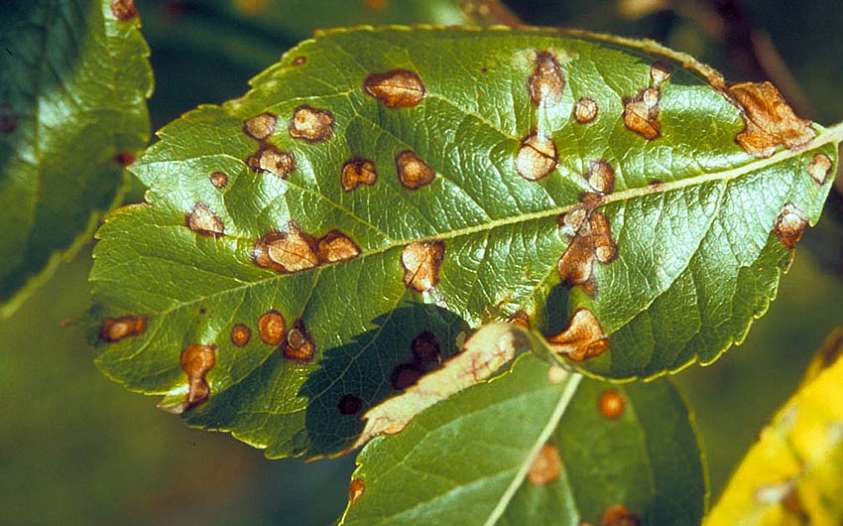

Dying areas (spots) of tissues of different types, colors and shapes are formed on different parts of plants. The bark cracks, gum is released from the wounds. There are especially many spots in thickened gardens. The infection persists on plant debris, weeds and soil. The spores of the fungus are transferred by water, wind, insects, animals and humans, when, during work, it passes from diseased plants to healthy ones.
In the spring, before bud break, treat the plants with 3% Bordeaux liquid, and before flowering and after harvesting with 1%.
Bacterial root cancer
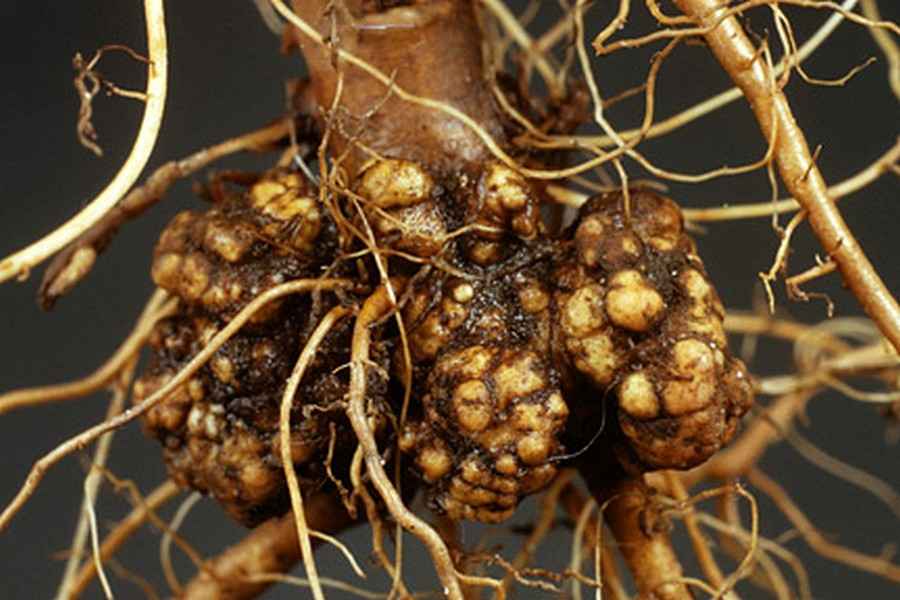

Small, soft, tumor-like growths with a smooth surface appear on the roots and root collar. Then they grow, harden, their surface becomes bumpy. In the fall, growths can collapse. The pathogens remain in the soil and remain viable for 3-4 years.
Do not use seedlings with signs of cancer for planting. In the area where the causative agent is located, do not grow plants susceptible to this disease for four years.
Cancer black
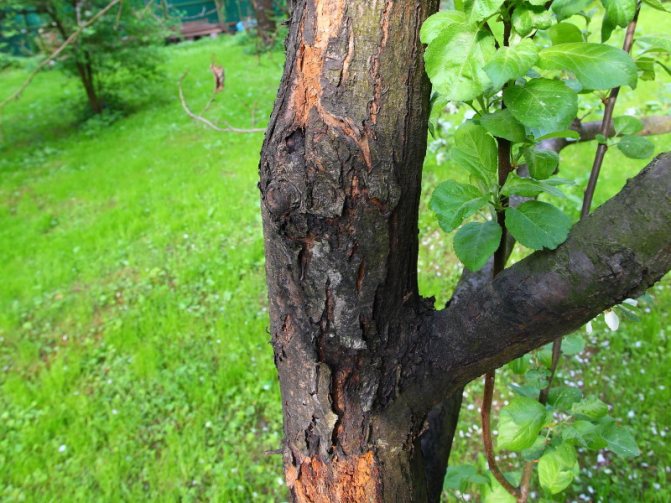

Black cancer is a mushroom. The causative agent of black cancer enters the plant through damage in the bark. On large branches, at first, brown-violet depressed spots are formed, then the bark turns black and cracks. On thin branches, the bark also turns black, swells, falls behind and hangs down in flaps. Brown or reddish brown spots appear on the leaves. The flowers appear burnt, and the fruits look like black rot. They are later mummified. A diseased tree can die in 3-4 years.
Do not damage the bark. When wounds appear, disinfect them with 3% copper or iron sulfate and cover with garden varnish.
Scoops
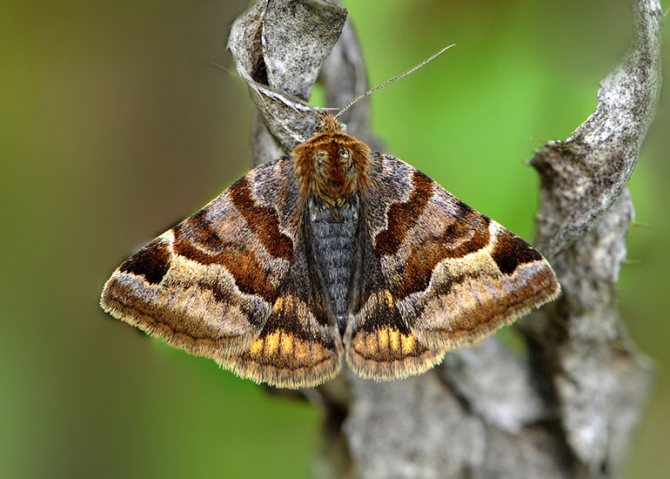

There are about 30 species of them in our gardens. The butterflies are inconspicuous, gray or brown, with a pattern on the wings characteristic of each species. Caterpillars (20-60 mm) are usually naked, gray, brown, green in different shades. Open day and night gnaw buds, flowers, leaves, fruits.
Thin branches. Collect caterpillars. Trap butterflies with fermenting molasses. Treat plants with infusions of tobacco, makhorka, decoction of tomato tops.
Aphid
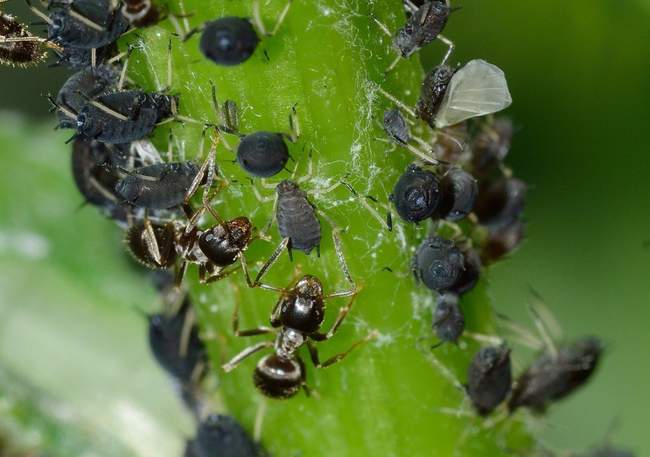

From overwintered eggs, the larvae appear when the buds open. Soon they turn into asexual viviparous females. At the beginning of summer, they give birth to winged settler females, which form new colonies. At the end of summer, winged striped females appear. They give rise to a sexual generation of aphids. Fertilized females lay overwintering eggs. Where aphids are, the leaves wrinkle, the shoots stop growing.
Remove root growth. Colonies of aphids first appear on it. At the beginning of summer, put trapping belts on the trunks, and in the fall, collect them and burn them. When aphids appear and then every 15-20 days, spray the plants with an infusion of chamomile, tobacco, dandelion or garlic.
Apple flower beetle
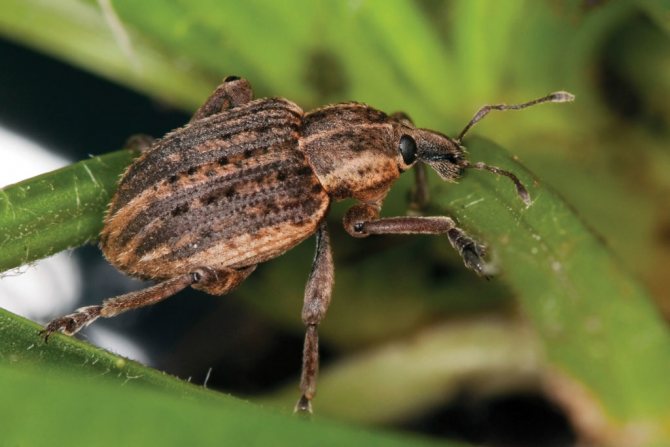

The apple blossom beetle is a gray beetle (4-5 mm) with oblique light stripes on the wings. Hibernates in cracks in the bark, hollows, fallen leaves. In early spring, it gnaws narrow deep holes in the buds, from which droplets of juice protrude. Females lay eggs in flower buds. The larvae glue the petals from the inside. The buds do not open, turn brown and take on the appearance of brown caps. Inside each is a larva, later a pupa, and even later a beetle. Beetles emerge from buds, settle in the garden, skeletonize leaves, find a secluded place and stay there until spring.
Apply adhesive catching belts to the booms. Before flowering, in the morning, shake off beetles numb from the cold on the bedding and destroy. Pick off brown buds with larvae.
Cytosporosis
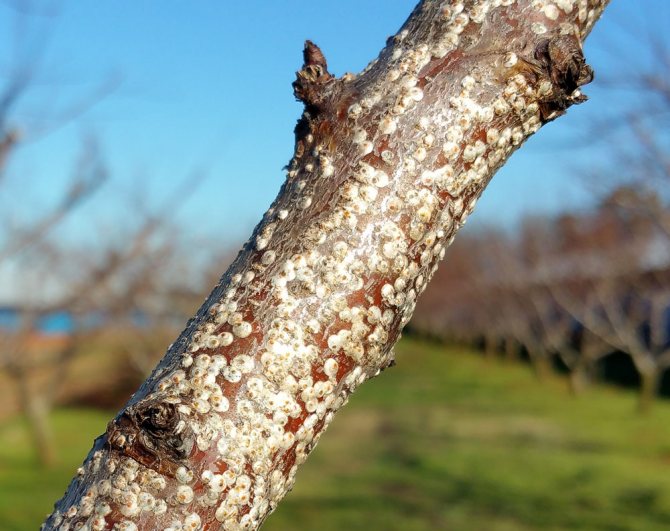

Cytosporosis - this disease is transient and chronic. In the first case, reddish-brown and yellow-brown spots of irregular shape appear on the bark. Gradually, they grow and ring a branch, which soon dries up. The tree can die in 2-3 years. In the second case, tubercles appear on the surface of the reddish-brown bark. The bark resembles goose bumps. The wood dies off. Separate small and large branches dry out.
Do not damage the bark. When wounds appear, disinfect them with 3% copper or iron sulfate and cover with garden varnish.
LiveJournal
Rowan moth
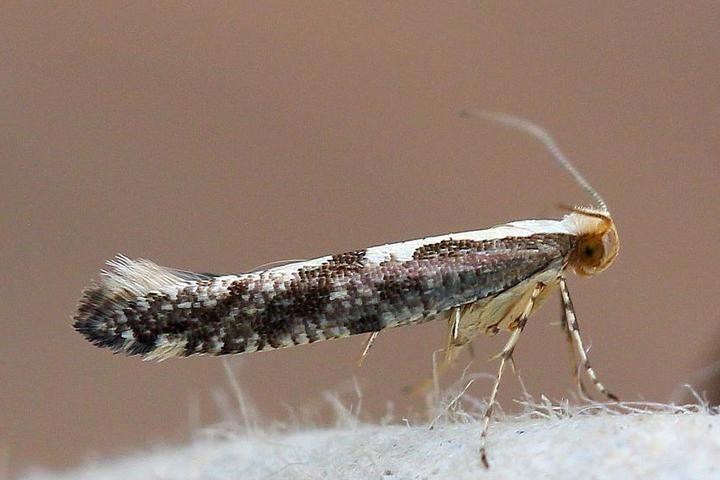

Widespread in collective and household plots. It is a small butterfly with a wingspan of 11-13mm. The mountain ash moth is usually found on the common mountain ash, but in years when the mountain ash does not bear fruit, it damages the apple tree. At the same time, several caterpillars simultaneously bite into the pulp of the fruit, which make narrow, winding, rusty-colored passages, as if diving into the pulp, therefore the mountain ash moth is called "diving". Outside, spots form on the surface of the damaged fruit. Damaged fruits acquire a bitter taste and lose marketability.
Control measures
- Where spraying against the moth is carried out, special treatments against moths are not required;
- from other activities, the collection of the wormy carrion and its destruction and the autumn digging of the soil are effective.
1 locust
A dangerous pest of garden, field, vegetable garden, forest, melons and gourds. Locusts can also harm grasses in hayfields and pastures. This insect is quite large - some individuals reach 6 centimeters. The danger of locusts is that they gather in flocks of up to hundreds of millions of individuals and cross significant distances. At the same time, the locust destroys all vegetation in its path. As a consequence, a region that has been attacked by locusts may experience famine. Locusts gather in flocks if their population is very high and there is not enough food in the area where they settled earlier. This happens when conditions are favorable for locust breeding. Otherwise, locusts can live in one place for a long time.
Winter moth
Damages fruit trees and deciduous forest species. Young caterpillars hatched in early spring penetrate the blossoming buds, later - into the buds and flowers and eat away their contents, and then the leaves, leaving only the main veins.
Control measures
- Spraying with 3% nitrafen solution is used against hibernating eggs;
- against caterpillars, spraying is effective during the budding period with a 0.3% solution of karbofos.
Let's start with the egg
"Why do we need to know this?"
By the external signs of the egg, the location and type of clutch, you can determine the type of pest and understand how to deal with it.
The first phase of insect development is the egg. By the way, while future insects are sitting inside the eggs, various transformations gradually take place with them, but we cannot see them - after all, they are reliably hidden by the shell. Eggs can be very different in size and appearance.
Egg-laying scoops: there will be many pests. Photo: AiF / Nina Belyavskaya
Female insects can lay eggs singly or in groups.The group is called egg-laying (even if there are only a couple of pieces in the clutch - like a green oak leaf roll). Eggs there can be arranged in regular rows or randomly, in one layer or in several.
Most often, clutches are located openly - on the surface of leaves or other parts of plants, but the eggs themselves are usually well disguised by the color of the surface on which they lie, and are protected (by fluff, foam, hairs, excrement). In some moth butterflies, females die on their clutches, spreading their wings. Oddly enough, it works. Insectivores bypass the bodies of butterflies, and the offspring remains intact.
Sometimes insect clutches are in plain sight. They seem to have a bright color on purpose, but no one touches them. And no wonder - they are poisonous. The poison passed into the eggs from the mother's body, who received it with food, while still a larva, accumulated it, carried it through the pupal phase and passed it on to its offspring for protection while they are just embryos in immobile eggs.
But eggs immersed in plant tissues (such are left by leafhoppers, sawflies and many stem pests) or in the soil (beetle, filly, etc.) are best protected.
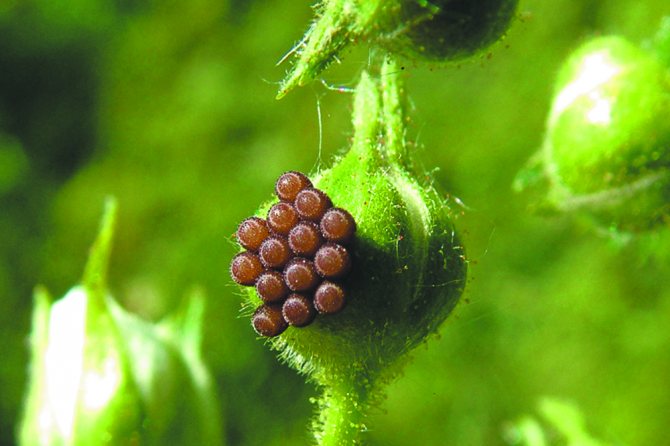

Oviposition of the shield bug. Photo: AiF / Nina Belyavskaya
Some insects prefer not to rely on passive protection, but personally guard the egg-laying. Females of Prusak cockroaches carry with them the so-called ootecs, which they discard from themselves only when there are several hours left before the larvae emerge. Often people, when they notice a female Prusak with an ooteca, say: “A female with an egg,” and they are mistaken. This is not an egg, but a whole container with dozens of future cockroaches.
Felting females lay their eggs in an egg sac (ovisak), which is made from silky and waxy secretions. Female bear and earwigs not only protect the clutch, but also take care of the "newborn" larvae.
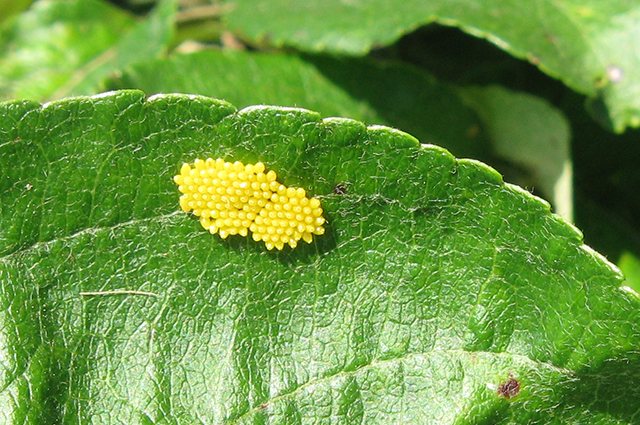

Hawthorn eggs. Photo: AiF / Nina Belyavskaya
How to fight?
If there are not many clutches, try to collect them by hand - cut them together with pieces of bark, leaves or twigs (often these are already dry branches, so the plant will not be worse off from this), scrape off with the help of improvised tools, and then destroy. Remember to protect your hands, respiratory tract and eyes. The hairs that protect some masonry can cause allergies. If the number of insect eggs dazzles in the eyes, emergency measures must be taken. Chemical treatment is necessary with ovicides - special preparations that penetrate the protective shell of the insect egg and kill the embryo. These drugs can also be used for prophylaxis in late autumn or early spring - for the destruction of wintering clutches of harmful insects. Just do not destroy the eggs "on legs": these are the clutches of our volunteer assistant - the predatory insect lacewing. Its larvae feast on the eggs of other insects and the larvae of aphids.
Cherry weevil
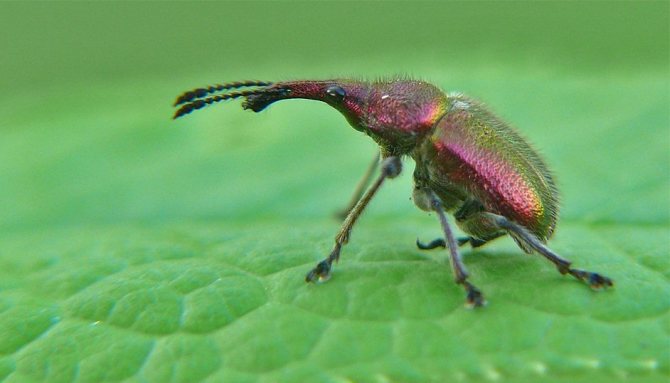

Damages cherries and plums. The beetle is golden yellow in color with a raspberry tint, 5-9mm in size. They damage beetles, which at the beginning of cherry blossoms feed on buds, flowers, young leaves, and then on ovaries. Gnaw out a deep hole in the fruit and place an egg near the bone. The hatching larvae penetrate the bone and eat out the nucleus. Damaged fruits do not ripen and fall off. The cherry weevil, when massively developed, can completely destroy the cherry crop.
Control measures
- Spraying after flowering with a solution of karbofos (75 g per 10 l of water);
- it is recommended to regularly collect volunteers and destroy them;
- a significant part of the larvae and pupae of the weevil dies when digging the soil.
Colorado beetle
It feeds on the leaves of plants of the Solanaceae family. The greatest damage is caused to plantings of potatoes and eggplants, less often they parasitize on peppers and tomatoes. It hibernates in the ground, even with severe frosts, only a small part of the population perishes. With the arrival of warmth, females lay eggs (up to 40 eggs in each) on the back of the leaves.The development time of larvae is about 21 days. Both the beetles themselves and their larvae are extremely gluttonous and are capable of completely destroying entire plantations of favorite crops in a short time, if you do not take enhanced preventive and control measures.
Cherry aphid
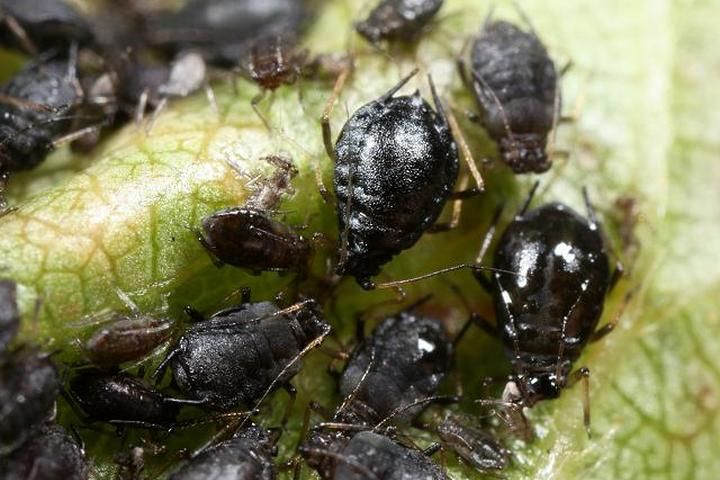

Aphids are brownish-purple, shiny, form numerous colonies on the apical leaves and young shoots, causing them to curl and stunted. Seedlings and shoots are especially often affected. Causes severe damage to young trees.
Control measures
- Early spring spraying with 3% nitrafen solution;
- against hatching larvae during the blossoming of trees, spraying them with a 0.3% solution of karbofos.
3.Aphids
Aphids are a dangerous pest of young foliage in gardens. The types of aphids differ from each other depending on the plants on which they live: gooseberry, red currant, shoot, potato, plum, cherry, gray, brown. Aphid colonies settle on young leaves immediately after they bloom and suck out the juice. Their waste products are poisonous, they lead to the death of young leaves.
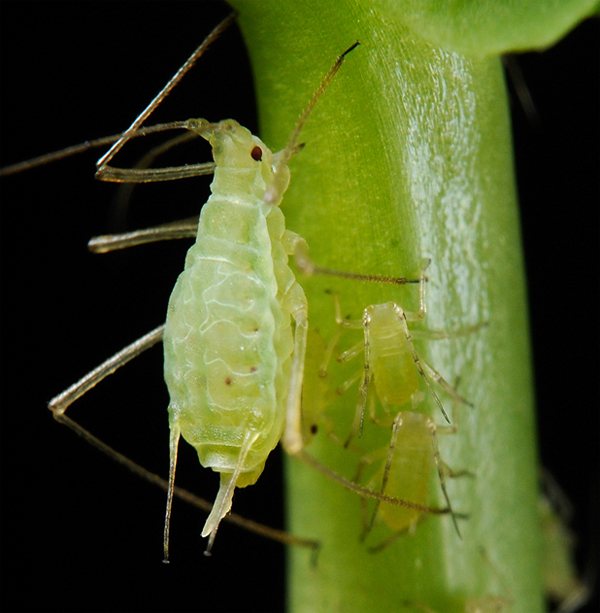

Cherry slimy sawfly
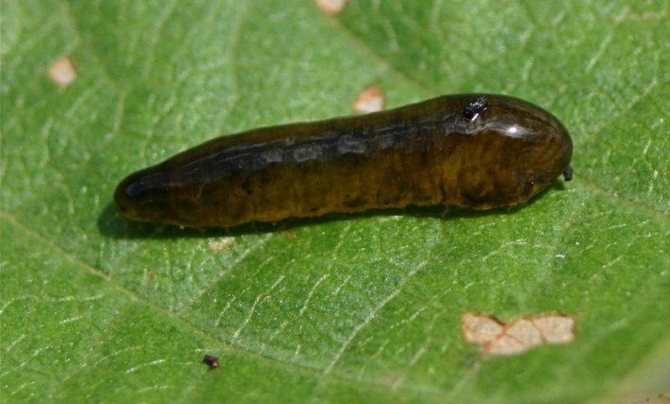

Damages cherry, sweet cherry, cherry plum, pear, common hawthorn. The larva is yellowish-green with a thickened head part, covered with black mucous secretions, 10 mm long. The larvae feed on the upper side of the leaves, eating the flesh and leaving the veins and skin intact on the lower side of the leaf. In case of severe damage, the leaves dry out, the budding of fruit buds decreases or does not occur.
Control measures
- Spraying with a 0.3% solution of karbofos during the hatching period of larvae;
- bitoxibacillin is effective (40-80 g per 10 liters of water);
- loosening and digging up the soil in the fall contributes to the destruction of wintering larvae.
Fungal diseases of birch bark: photo and treatment of trees
The first section of the article is devoted to the protection of birches (BETULA). Here you will learn how to treat these trees from pests and diseases in spring, summer and autumn.
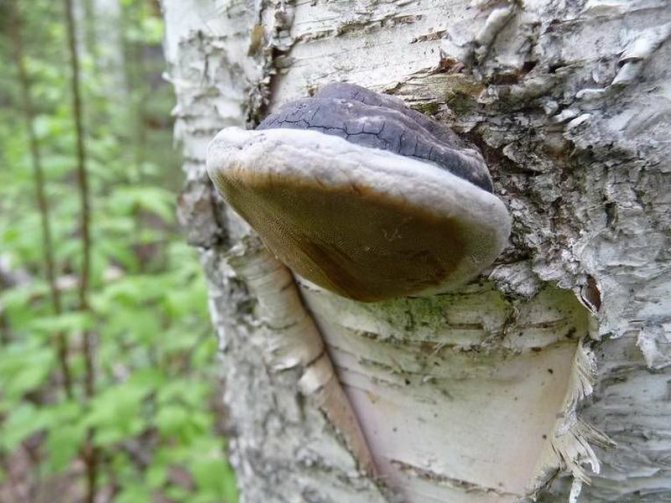

A real tinder fungus. The causative agent is a mushroom Forties fomentarius (L.) Gill. Causes a white marbled, sapwood-rotten trunk. When damaged by this disease, the wood of deciduous trees turns brown, later becomes yellow-white with brown-black winding lines. Radial cracks with leathery mycelium films appear, large, perennial, hoof-shaped, with a wide base, fruiting bodies, 10-40 cm in diameter, are formed on the bark. The surface is gray or gray-black, sometimes brown with wide concentric zones.
Worlds of struggle. Culling of dead trees, stubbing. Fruit bodies are cut off, the cuts are disinfected with a 3-5% solution of copper sulfate, covered with oil paint.
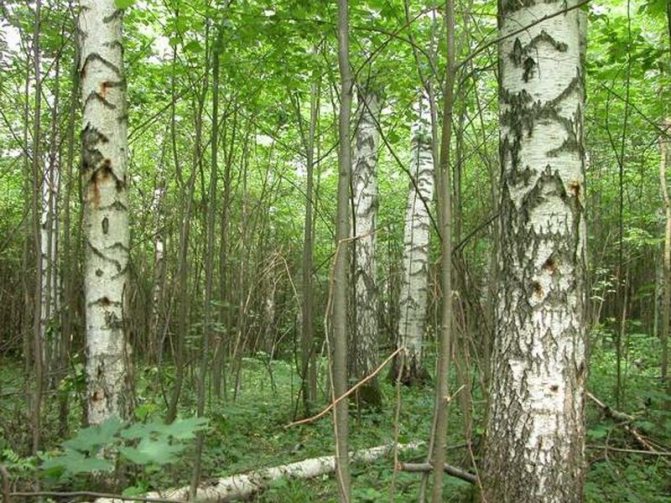

Cytosporosis. The causative agent is the mushroom Cytospora horrida Sacc. In the affected bark, numerous black or dark gray tubercles are formed, protruding from the cracks. With this disease of the bark, young trees dry out.
Control measures. When treating trees for diseases in the spring, spraying is carried out before the leaves bloom with a Bordeaux mixture or its substitutes.
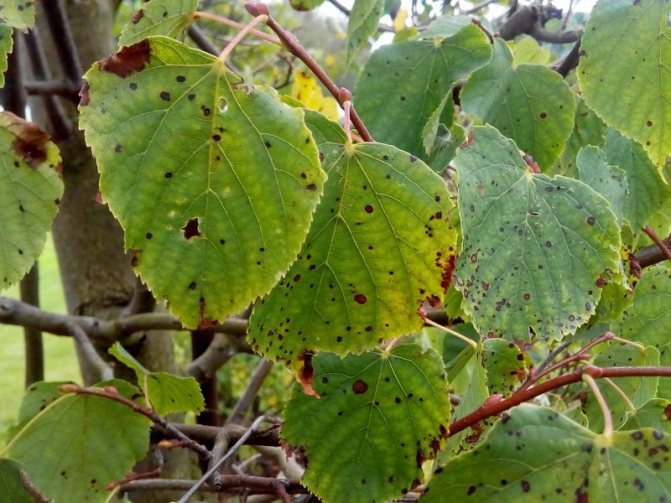

Brown spotting. The causative agent is the mushroom Marssonina betulae Magn. The spots on the leaves from mid-summer are brown, round or irregular in shape with a dark edge. In this fungal disease of trees, dark brown sporulation pads are formed in the necrotic tissue.
Control measures. Disposal of fallen leaves. To treat trees from this disease, spraying with 1% Bordeaux mixture or its substitutes is carried out.
Plants that protect against pests in the garden
If you want to enjoy the scent of flowers in your garden, not pesticides, then insecticidal plants are the best choice for pest control. Infusions and decoctions of these plants, which protect against pests, practically do not pose a danger to humans, as well as to birds, hedgehogs, etc. They relatively quickly lose their toxic properties and do not accumulate in soil and plants.
Gather wild and cultivated insecticidal plants in dry, clear weather, dried in the shade. Further stored in a dark, well-ventilated area. You can prepare decoctions and infusions immediately after collecting the plants.
After insisting or boiling, the liquid is filtered through a double layer of gauze or burlap. If the concentrated broth is drained hot and sealed tightly, it can be stored in a cool room for up to 2 months. Before use, the broth is diluted to the required concentration.
When treated with infusions and decoctions of plants from pests in the garden, insects die within 3 days. After 4-6 days, the treatment must be repeated to consolidate the result.
For preventive purposes, many gardeners plant insecticidal plants (calendula, garlic, onions) in separate groups on the plots.
When planting, it is necessary to maintain the optimal distance between the plants. Stiffened plantings are more often affected by viral and fungal diseases, pests multiply more there. Planting depth also matters. Shallow planting of the bulbs is unacceptable, as this leads to overheating. In the spring, when mass shoots appear, all diseased and non-germinated specimens are removed. During the growing season, plants affected by nematodes, viral diseases are culled and destroyed. If necessary, the soil is treated with insecticides.
Taggedpests
recommend
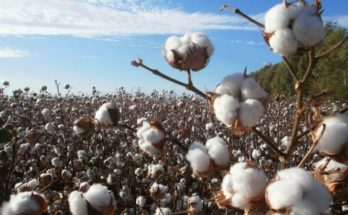

Growing cotton
November 15, 2019
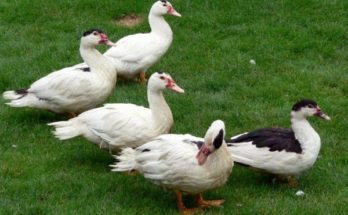

Mulard: growing
October 21, 2019October 21, 2019
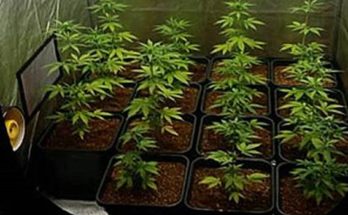

Growing cannabis
August 14, 2019
New
Growing azaleas: care rules
November 27, 2019
Growing cotton
November 15, 2019
Growing Streptocarpus
November 3, 2019November 3, 2019
Mulard: growing
October 21, 2019October 21, 2019
Growing cyclamen
October 6, 2019
Osteospermum: growing
September 25, 2019September 25, 2019
Growing bells
September 5, 2019September 5, 2019
Diplomas - Growing
August 21, 2019
Growing cannabis
August 14, 2019
Growing cucumbers on the balcony
August 8, 2019August 8, 2019
Growing a rose stock
July 31, 2019
Cucumbers in a barrel growing
July 24, 2019
Growing hosts
July 17, 2019July 17, 2019
Eustoma growing conditions
July 10, 2019July 10, 2019
Picking tomatoes
July 4, 2019July 4, 2019
Tags
apricot watermelon eggplant broccoli spring grapes cherry pests lawn peas hydrangea pear fence winter zucchini cannes cabbage potatoes strawberries rabbits corn chickens onions raspberries carrots cucumbers cucumbers orchid autumn greenhouse pepper watering a pond bees seedling garlands beets plum greenhouse tomato tomatoes pumpkin forsythia
Random post
How to grow an apricot from a stone yourself Powdery mildew on onions Growing white cabbage Rabbits in the country Modern schemes for planting garlic Haworthia home care What a strawberry-raspberry hybrid looks like How to properly care for a pumpkin: recommendations for a gardener
Polyphagous pests
Desert locust
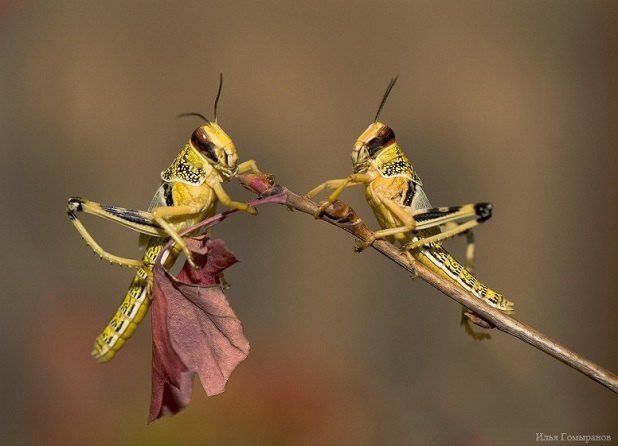

It is widespread in the tropical and subtropical climates of countries such as Africa, Asia, India, some species are found in the United States, in the CIS it is rare. There were massive invasions in 1928 and 1930 in the Urals, in 1958 in Turkmenistan.
It feeds on over 500 species of herbaceous plants and various tree species.
Hibernates in the adult stage. A characteristic feature of the Desert Locust is its ability to migrate over great distances.
Read more about crop pests!
Green grasshopper
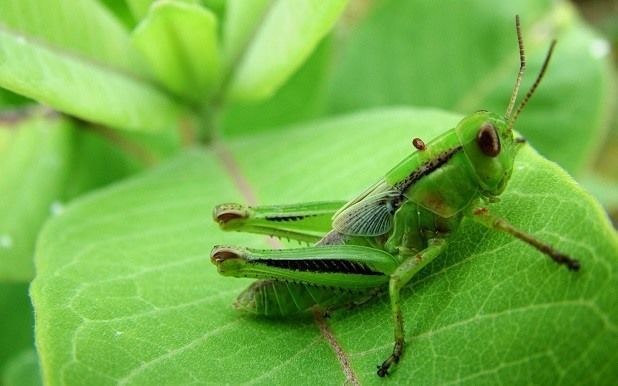

Distributed everywhere. It feeds on wheat, barley, corn, millet, mogar, soybeans, alfalfa, etc.
Eggs overwinter in the soil, with spring warming, larvae hatch.
At the beginning of development, it feeds on wild plants, after field crops, vegetables and in vineyards.
Sowing nutcracker dark
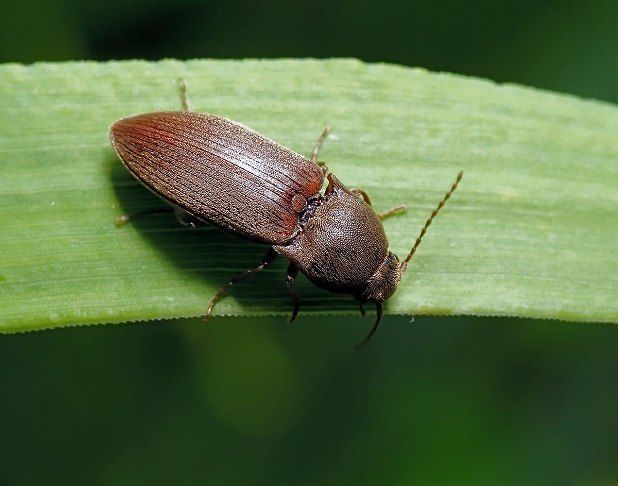

Beetle larvae cause great damage to corn, root crops and vegetables.
Wintering of beetles in the soil; mass release May-June.
Broad-breasted slow
On our territory, it is distributed in the southern regions. Beetles feed on wheat, corn, sunflowers, beets; larvae harm the sown seeds of various agricultural crops, gnaw the underground parts of plants (tubers, stems, roots, etc.).
The beetles spend winter in the soil; in the spring they come out in early May.
Exclamation scoop
It damages many types of crops, and additionally feeds on flower crops.
Caterpillars hibernate in the soil, pupate in spring and fly out en masse in the third decade of June. It is found much less frequently than winter crops, but as more cold-resistant, it is capable of causing tremendous damage to both agricultural crops and winter crops.
Alfalfa scoop
A pest of flax, soybeans and alfalfa, cereals and corn.
Pupae overwinter in the soil.
Control measures: (similar for winter, gamma scoops and cabbage scoops). Early sowing dates, compliance with the change of crops, cleaning from weeds, deep plowing of fields, spraying crops with permitted insecticides.
Corn (stem) moth
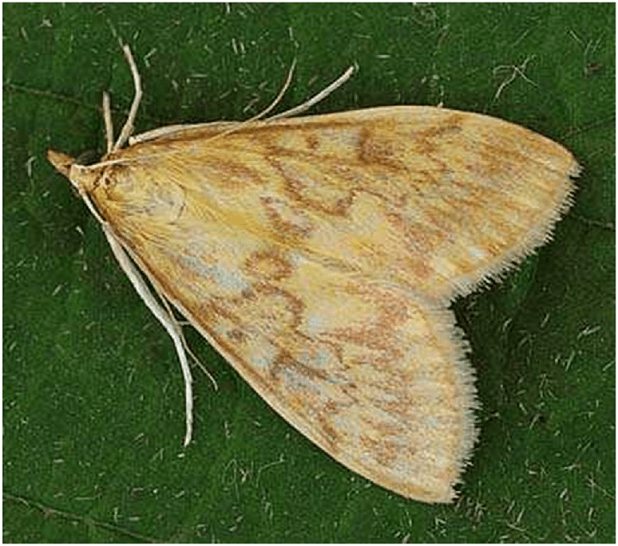

The corn moth caterpillar harms corn, hemp, millet, hops, sunflowers, and develops in weeds.
The caterpillars overwinter in the stems of damaged plants, pupate from mid-May, butterflies fly out after a while, their age coincides with the beginning of panicle throwing by corn.
Control measures: regular weed control; timely harvesting of corn at the lowest possible cut; deep plowing, permitted insecticides are used.
Meadow moth
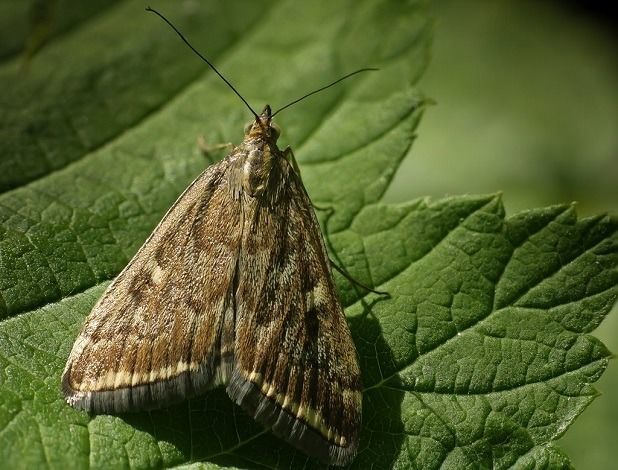

Pest-caterpillar moth, feeds on beets, sunflowers, corn, legumes, melons and other crops.
Control measures: destruction of weeds, deep plowing of areas, spraying with permitted insecticides.
How to deal with insect pests: plant protection methods
In order not to disturb the natural balance, try to give preference to such plant pest control products that would not harm beneficial insects and birds. The main thing in protecting plants from pests is a system of preventive measures: it is easier to prevent a disease than to cure it. The main role is assigned to plant care activities, from the purchase of planting material to wintering or laying in storage.
Crop rotation prevents the accumulation of pathogens and pests in the soil and creates conditions for the normal growth and development of plants. It is known that nasturtium, mustard, calendula, emitting phytoncidal substances, help to cleanse the soil from infection. Therefore, planting bulbs is recommended to alternate with these annuals. The plants are returned to the former site after 5-6 years.
How else to deal with plant pests in the garden? An important point is soil preparation. On poorly drained, humus-poor soil, plants are more likely to get sick, grow weakened and are attacked by pests. Before laying a flower garden, the site must be cleaned of debris: branches, stones, chips, etc. Deep digging of the soil in the flower garden in the fall will help get rid of the larvae and eggs of harmful insects wintering in it (scoop, wireworms, earwigs). When using compost or manure, you need to be careful not to add May beetle, which often settles in compost heaps, into the flower garden. The larvae must be carefully selected and destroyed, you can feed the chickens. Seedling boxes must be disinfected annually (with a solution of potassium permanganate or boiling water), and the earth in them must be changed (it is better to use ready-made seedling mixtures).
For most ornamental plants, areas with light, loose soils are more suitable. Heavy acidic soils that promote the spread of fungal infections are limy. For this, fluff lime is introduced in the fall at the rate of 100-200 g per 1 m2.
If you have purchased healthy planting material, then there will be much less problems. Therefore, purchases are best done in specialized stores. Try to avoid thickening the plantings, in such conditions the plants lack nutrition and excessive moisture appears, which also leads to the reproduction of pests and pathogens. Weeds need to be systematically removed as they are a reservoir for many diseases and pests. In addition, they thicken plantings and compete with crops for nutrients.
Plant debris (foliage, stems, fallen flowers) often become a haven for pests. Do not leave garbage near plants. Rake it carefully with a rake and destroy it.
Microorganisms
Microorganisms are airborne or infiltrated with damage from other pests. Distinguish between obligate microorganisms that do not exist outside the plant, and conditionally phytopathogenic, capable of living in other environments. The first group is dangerous in that, being unable to exist outside the carrier, it uses its full potential, significantly weakening agricultural crops. The second form can be transmitted over long distances and cover large areas. Just like insects, garden pests are highly specialized on one group of plants. Plants are harmed by:
- Viruses - characteristic lesions: mosaic spots, mottling, deformation of shoots and a general weakening of growth. A typical representative is the tobacco mosaic of cucumber crops.
- Bacteria - the disease proceeds in the form of necrotic changes in tissues.
- Mushrooms - cause more than 80% of all plant diseases. Parts of the plant and fruits are used as a substrate for growth. Phytopathogenic fungi can be unicellular or multicellular.
- Actinomycetes, or radiant fungi, are a type of bacteria that lives in soil. They fulfill an important ecological task in the decomposition of solid substrates. There are parasitic forms.
- Mycoplasmas are characteristic features of the disease: small leaves and low seed content.
This is interesting - the largest beetles and insects in the world
Similar posts
The most dangerous pests of flowers and plants


Protect your garden from pests
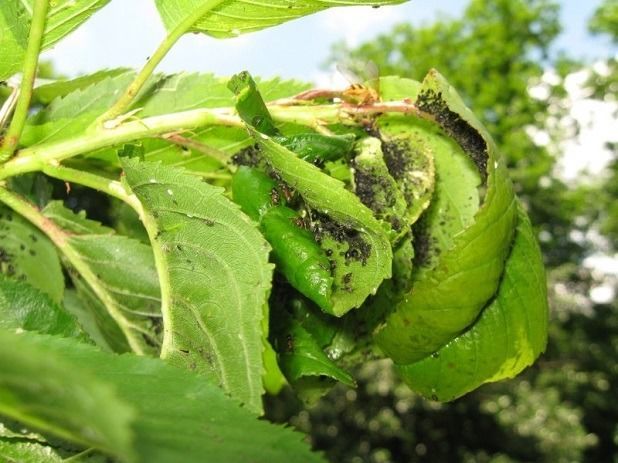

The most dangerous pests of agricultural plants
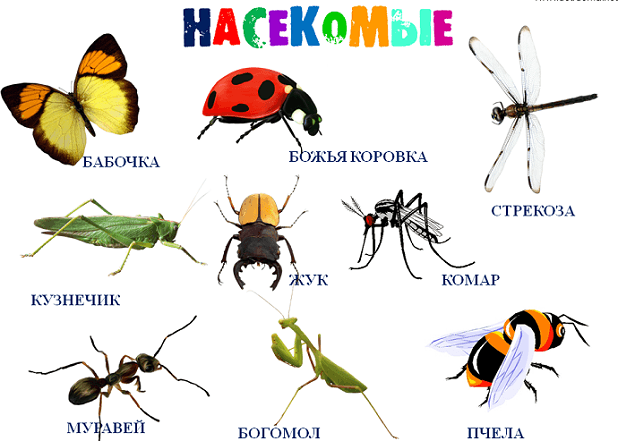

Rowan diseases and how to treat trees
The following describes how the treatment of rowan trees from diseases in autumn, summer and spring is carried out.
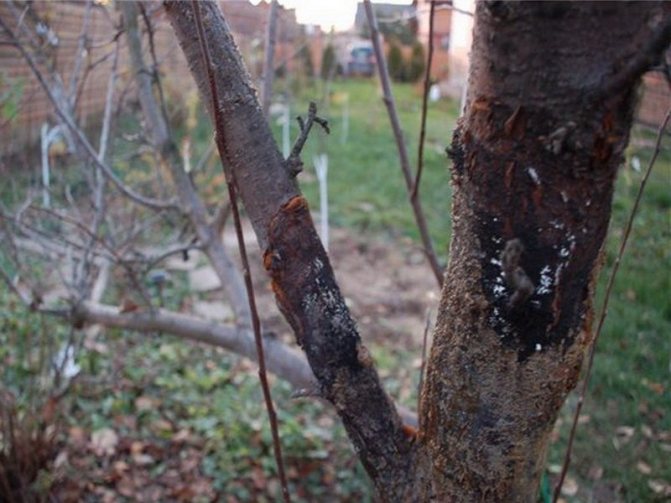

Staggered (ordinary, noncritical) cancer... The causative agent - the fungus Neonectria galligena - causes the formation of multi-stage cancerous wounds on the trunks and thick branches.
Control measures. Pruning branches, removing dead trees. The ulcers are cleaned, disinfected with a 3-5% solution of copper sulfate, and covered with oil paint. Trees are sprayed with Bordeaux mixture or its substitutes before the leaves bloom.
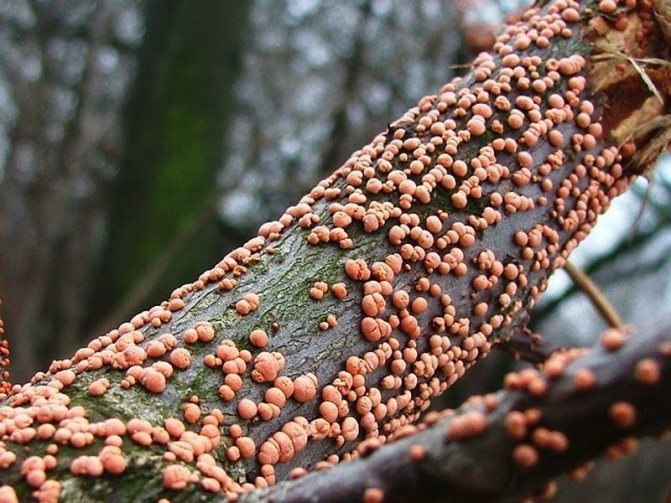

Tubercular necrosis of the cortex. The causative agent is the mushroom Tubercularia vulgaris Tode. Causes death (necrosis) of the cortex. Leaves and shoots turn brown and dry, numerous brick-red sporulation pads up to 2 mm in diameter appear on the surface of the bark, gradually turning brown. Many deciduous species and shrubs are affected.
Control measures. Pruning branches, removing dead trees. Preventive spraying in spring with copper-containing preparations.
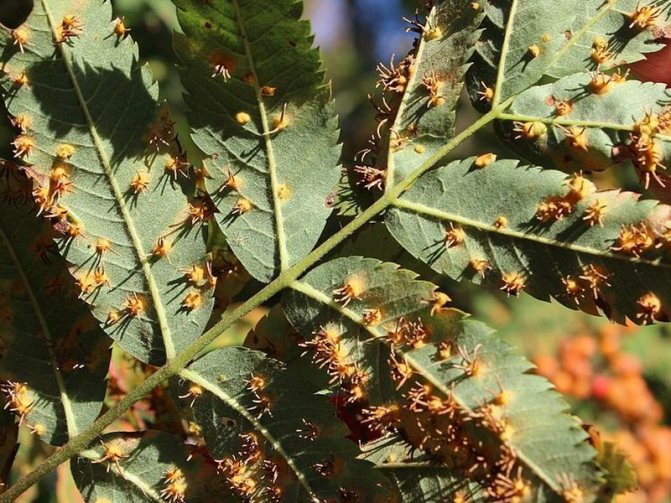

Septoria spotting. The causative agent is the mushroom Septoria hyalospora Sacc. f. aucupariae Thum. - causes the formation of brown spots on the upper side of the leaf, and Septoria sorbi Lasch. - on both sides of the sheet. By autumn, black dotted flattened pycnidia form in the tissues.
Control measures. Collection of fallen leaves, preventive spraying in spring and early summer with copper-containing preparations.
Maple pests and how to spray trees
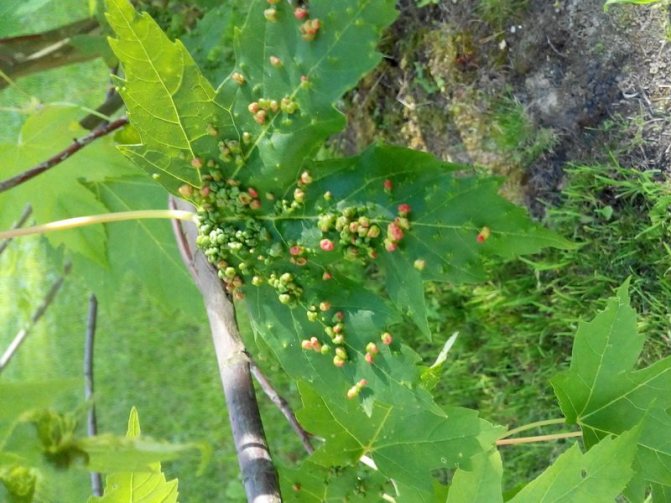

Maple aphid Drepanosiphum platanoides Schr. Small, sucking, yellowish-brown insect with long black antennae and legs.Eggs overwinter under the bark, in spring the larvae and adults feed on the buds and leaves, alone, 4-6 generations develop. In October, the females of these tree pests lay their eggs.
Control measures. To protect trees in the spring from these pests, spraying is done with one of the preparations: kinmix, fufanon, spark, Inta-Vir.
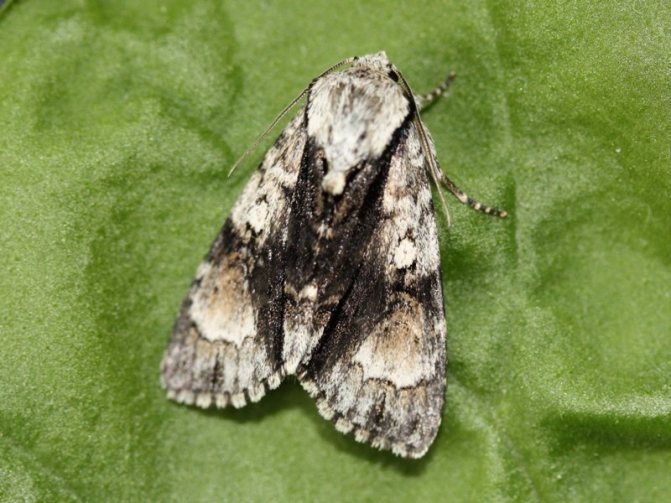

Maple lancet. Maple lancet Acronicta aceris L. is a grayish butterfly with a wingspan of 35-45 mm.
As you can see in the photo, the caterpillar of this pest of trees up to 50 mm long is covered with bundles of long yellow-red hairs, on the back there are a number of diamond-shaped spots with a black border:
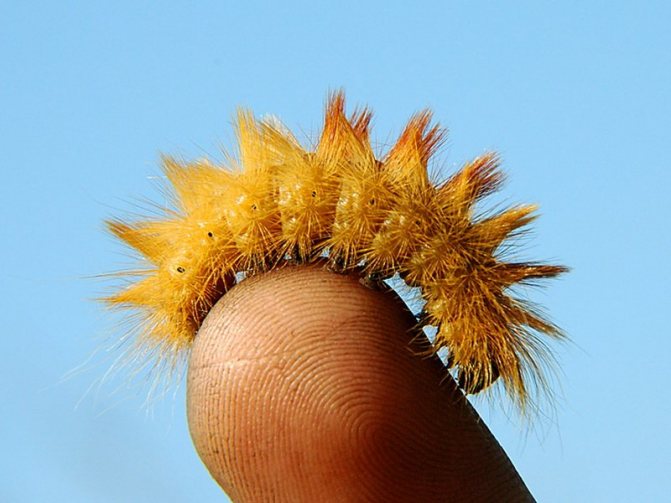

It feeds from June to September, nibbling the leaves of many species.
Control measures. Collection of single tracks. To protect trees from these insects, they are sprayed with preparations: kinmix, fufanon, spark, Inta-Vir.
Photo gallery
Insects
In order to understand which insects are considered pests, it is necessary to classify them. Many of them are involved in pollination of plants, destroy fungi, and improve the composition of the soil. Although it is not only phytophages that can cause damage, all insect pests of fields and gardens are divided according to the type of food:
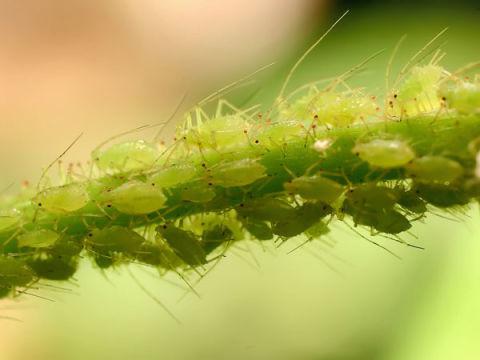

- Monophages - eat only one type of plant, one type of fruit: pear moth, Colorado potato beetle.
- Oligophages eat plants of the same family: cabbage moth, for example.
- Polyphages eat everything, these include the cabbage scoop, locusts.
Bedbugs
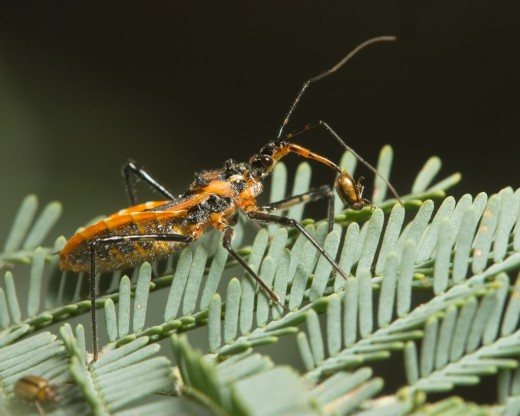

Gminatus australis bug with beetle prey
The predatory bug belongs to the class of weevils. Its various species have specific food sources. For some, this is the juice of a plant, for others - insects. For the gardener, first of all, the latter are interesting, which, among other things, destroy aphids. These include soft-bodied and false bugs, among which some species feed mainly on spider mites.
Flower bugs are small carnivorous insects 3-4 mm long. At one time, the female lays up to 8 eggs, mainly at the edges of the leaves. During the year, the bugs hatch 2 generations, and in areas with a warm climate even 3. Predatory bugs overwinter as adults. Larger species of the flower bug also feed on gall midge larvae.
Settling in the garden: no special requirements and recommendations, except for the exclusion of the use of chemical plant protection products.
Riders
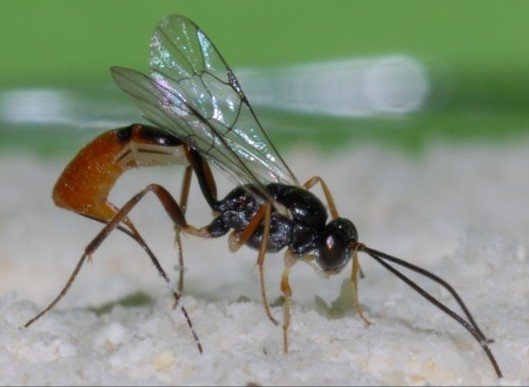

Rider Venturia canescens,
Riders develop as parasites on various hosts, which can be many insects, with the exception of spiders. For gardeners, riders are of great importance, as they destroy butterfly caterpillars, fly larvae and aphids.
In appearance, wasps resemble wasps and in most cases have a dark or variegated color. Their size is not the same and ranges from less than 1 mm to more than 10 mm. The rider lays eggs on the insect, its larva, caterpillar or in their bodies with the help of a special sting, which pierces the body of the victim with lightning speed. The larva of the corresponding species of wasp hatches from the egg and sucks out the “host”.
Some types of wasps
First type: for all their sluggishness, wasp larvae are insectivorous, although they do not hunt on their own, but feed only on those insects that adults bring them. Adult wasps of these species feed on nectar of flowers, sweet juices of berries and fruits, but for the younger generation they catch insects, chew them and feed them in the form of a mushy mass.
The brood is fed by social wasps:
- paper;
- European and Asian hornets;
- polybine wasps in the USA.
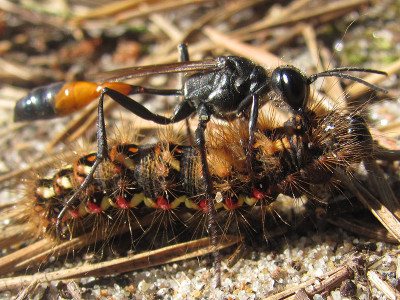

A wasp rider caught a caterpillar to lay its eggs in
Second type: in most solitary wasps, the female prepares for the larvae a small nest in the form of a mink in the ground or a small paper shelter attached to a vertical surface. The female brings a paralyzed insect to this chamber, but not killed by the poison and lays an egg on it.The wasp larva hatched from the egg slowly eats the insect, and begins to do this from those organs, the loss of which does not lead to the instant death of the victim.
In some of these wasps, the female sacrifices once, lays an egg and clogs the burrow. In others, an adult may visit the nest from time to time and bring additional insects into it.
Settling in the garden: put Fabre's hive in the garden, etc. (see information below)
Specific crop destroyers
It is difficult to calculate which pests of the fields bring the most losses. Cereals are harmed by bread sawers, some types of thrips, barley moth, green-eyed. Peas and leguminous crops are harmed by aphids, pea leafworm and caryopsis, caterpillars of metal-gamma. The flax worm eats not only flax, but also peas. Hay mowing grasses are mainly damaged by scoops, whose larvae feed on roots and seedlings. Buckwheat is prevented from developing by a blizzard, a meadow moth. All kinds of leaf beetles cause greater harm to garden crops: carrot fly, cabbage moth, cabbage caterpillars and rape sawfly, cabbage weevil. Insect pests of fields and vegetable gardens are numerous. It is difficult to mention all of them.
What are the main pests of cultivated bulbous plants
What other insect pests of cultivated plants cause huge damage to garden plantings?
Gall nematode - one of the main pests of plants, including viola, daffodils. It is a microscopic worm invisible to the naked eye. Adult males are up to 1.5 mm long, their body is threadlike. Females of these pests of garden plants have a pear-shaped body up to 1.3 mm long. The female lays up to 400 eggs. The larvae develop in galls - bulges on the roots of plants. Roots damaged by root knot nematode are unable to provide the plant with sufficient nutrition and water. Plants are stunted and do not bloom. Often, the roots rot due to the ingress of pathogens into the galls. From galls, pests pass into the soil and penetrate into the small roots of other plants, which also stop growing, turn yellow and often die. The rootworm nematode spreads better on light soils. Pests bring great losses to bulbous plants. The larvae feed on the sap of leaves and stems, and then move into the bulb. It softens, brown rings are visible on the cross section, the so-called "ring rot". Affected plants become smaller, the leaves turn yellow and swells are visible on them. The development of plants is delayed, they bloom poorly, and when severely damaged, they die. These pests of bulbous plants penetrate into healthy planting material when planted in contaminated soil, as well as during storage. If the damage reaches the bottom and spreads to the rest of the scales, the bulb dies.
Thrips hover like a cloud over the favorite "food" - gladioli and irises, leaving silvery spots on flowers and leaves. The buds do not bloom well, and with severe damage, the inflorescence does not form at all. Hot and dry summers are favorable for pest breeding. During the season, up to 9 generations of thrips develop in the southern regions. The pest can also damage the planting material in storage. Thrips are especially active at temperatures above 10 ° C. A sign of damage from thrips is shiny scabs on corms, bulbs or tubers. Thrips, when there are many of them, can do great harm and even destroy the planting material during storage. Thrips damages irises, gladioli, clematis, roses, less often dahlias and other crops. Small insects, about 1.5 mm long, barely visible to the naked eye, cause significant harm to garden plants. Thrips settles in the leaf axils. The upper surface of the leaves, damaged by multiple pricks, acquires a silvery sheen.With a large accumulation of pests, the leaves are covered with small black specks of insect excrement. As a result of severe damage, the leaves turn yellow, dry out and fall off, which has a detrimental effect on the development of the entire plant, the laying of peduncles and flowers.
Medvedka (spinning top, cabbage, earth crayfish). The pest poses a serious threat to tulips and gladioli, does not mind gnawing on bulbs and other flowers. Dangerous for irises, especially in the southern regions. It can completely destroy the newly planted seedlings of the summer plants.
Pay attention to the photo - this insect pest of plants reaches a length of 3.5 to 5 cm:
It has wings, strong movable horny jaws, strong front pincers equipped with a toothed file to make it easier to dig holes in the ground. A toothed file, when moving in one direction, folds and forms a sharp spear, and in the other direction it opens to a certain angle like a saw blade and cuts the soil, and with it roots, tubers, bulbs. The pest easily travels underground, swims quickly in water and flies through the air. Crawling to the surface of the ground, it moves quite quickly. The insect's "uniform" is durable and waterproof. The pest is endowed with a very subtle sense of smell. The bear causes the greatest harm on loose fertilized soils and in warm regions, where it can multiply in huge quantities.
Ways to protect wood from insect pests
There are several ways to protect wood from pests. All of them are divided into preventive (prophylactic) and operational. Precautionary items include the following:
- Processing of freshly cut and delimbed trunks. In place of the cut, a tissue soaked in saline is fixed and the trunk is suspended upside down. The solution saturates the wood and protects it from decay and insects.
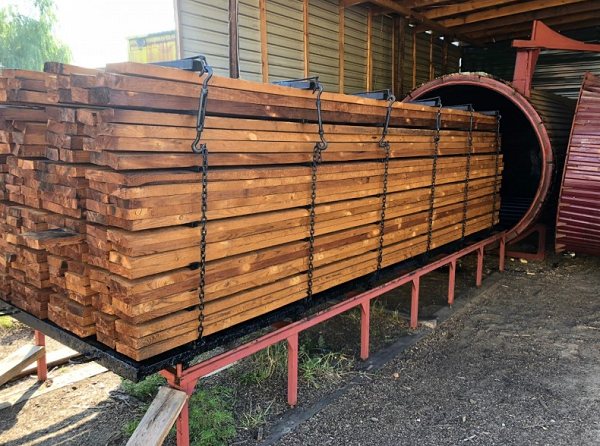

In such chambers, wood is heat-treated
- Heat treatment. The wood is treated with steam in a special room. At high temperatures in a tree, nutrients necessary for insects are destroyed, but its strength characteristics are not reduced.
- Dry steam method. It is similar to heat treatment. In this case, the wood is heated with dry steam for 6–8 hours to 80–90 ° С.
- Canning. Reliably protects wood from insects and moisture. The whole tree is immersed in a special solution. To increase the depth of its penetration into the wood, the procedure is carried out under increased pressure.
There are 5 ways to destroy insects that have already appeared in wooden structures:
- Raise the temperature of the wood using microwave radiation. It is not harmful to humans, does not change the structure of the material, but it is detrimental to insects. But this requires expensive equipment.
- Fumigation - to treat wooden structures with phosphine. This gas is highly permeable and can be used to reach the most difficult to access areas. At the same time, phosphine is an unstable gas and decomposes quickly. But after its application, the room needs to be ventilated for a long time and thoroughly.
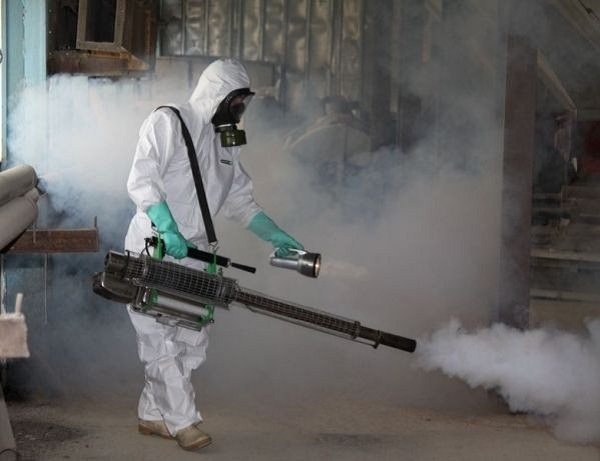

Fumigation can effectively control insects
- Treat with insecticides. They are sold in the form of emulsions, pastes, powders or aerosols and are classified as instant and residual. The former cause rapid death of insects, but are highly toxic. The latter have a delayed action. Insects are attracted by the smell of the substance, they come to the surface and die. Such products are low-toxic, they can be used indoors.
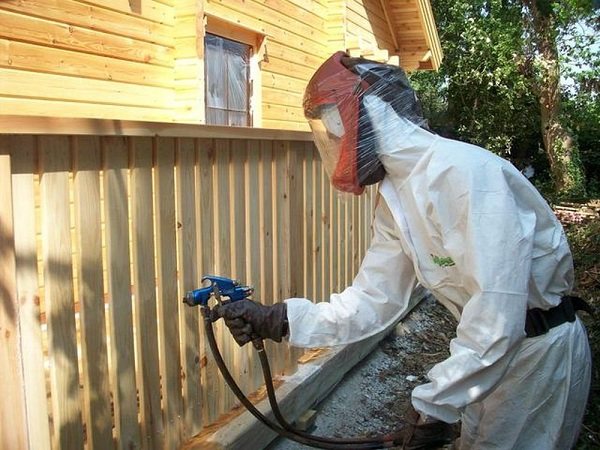

Insecticides can quickly kill insect pests
- Fumigation. To carry it out, an aerosol fog generator is required. It converts the chemicals used into steam, which is used to fumigate the wood surface. In this case, the substances do not penetrate deep into the wood, but settle on its surface.
- Douching.Chemicals are injected through a syringe into pre-drilled small diameter holes. After that, the holes are covered. This method is applicable at the initial stage, when there are still few pests. It is very time consuming and the result is only noticeable after two or three repetitions.
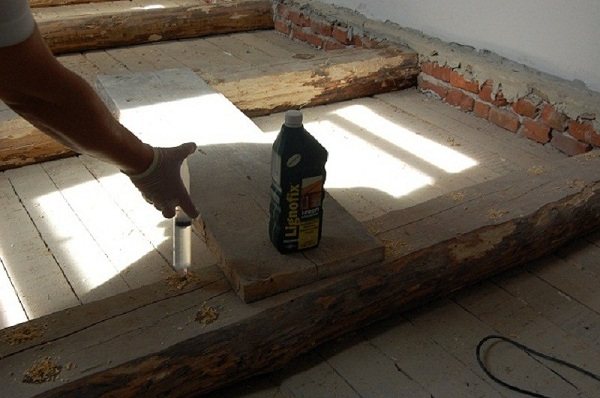

Douching is a long and laborious process and does not immediately yield results.
Pest classification
Agricultural pests are classified into:
- Insects.
- Microorganisms.
- Worms and slugs.
- Animals.
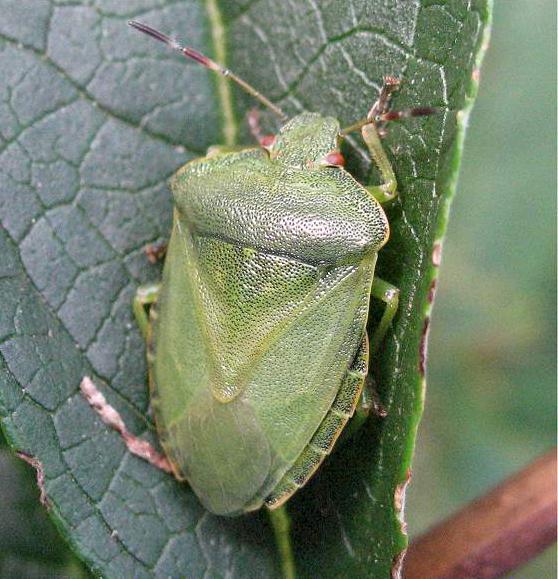

Pests are divided on a territorial basis. They can be specific to your region, or they can be found in gardens and vegetable gardens everywhere. Certain pests, most often microorganisms, are characteristic only of greenhouses. According to the type of damage, the enemies of agricultural crops are divided into:
- Root system pests.
- Eaters of leaves and stems.
- Pests of ovaries and kidneys.
- Fruit shredders.
Weevil on apple tree
The pest is a beetle with an oblong body 5-6 mm long, black or gray-brown in color. The proboscis and antennae are yellow on the head. The beetle is very active in trees and is able to lay eggs in buds.
Weevils feed on nectar, thereby causing wilting of inflorescences. In early June, the pest begins to move intensively through the trees. The larva overwinters under the bark or inside the branches.
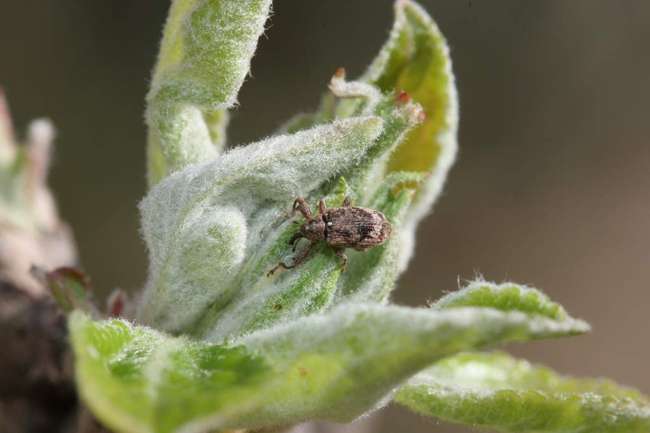

If more than 7 specimens are found on a tree, you need to start exterminating the pest. The most effective way to control the weevil is to spray the trees with insecticides such as Actellik, Vofatox and Fitoverm. When using these drugs, the complete death of pests occurs in 3-5 days..
The weevil has the ability to quickly adapt to the drug used. Therefore, it is necessary to alternate the listed drugs with Aktofit, Decis and Corsair.
In addition to spraying, the pest can be dealt with by timely collection of volunteers, weed removal and autumn tillage.
Gallica
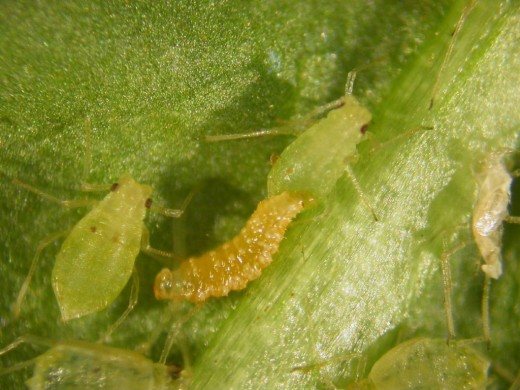

Gall midge larva Aphidoletes aphidimyza
Various species of the family of gall midges are better known to amateur gardeners as harmful insects (the larvae of a number of species develop in plant tissues, causing the formation of galls) than helping in the fight against the pest. The body length of gall midges varies from 1 to 5 mm. The well-known pests in the garden include, for example, pear gall midge.
Useful gall midges feed on the stage of aphid larvae. The most important species is Galitsa aphidimyza (Aphidoletes aphidimyza). The female (about 2-3 mm in size) lays 50-60 eggs near the aphid colony in one life span of 1 week. On the 4-7th day, orange-red larvae hatch. The latter bite the aphids on the legs and inject paralyzing liquid. The bitten aphid dies and is used by the larva for food. After 2 weeks, the fully formed larva falls to the ground and turns into a cocoon on the ground. After 3 weeks, the second brood hatches, whose larvae hibernate in a cocoon on the ground and hatch in the spring, being already adults.
Settling in the garden: no special conditions are required, except for the complete exclusion of the use of chemicals.
Aphid
Aphids are a small insect of the Hemiptera order of green, black, yellow, pink or brown color. Its size can be up to 4 mm. The body is soft, oval in shape, the limbs are long, but the aphid moves very slowly.
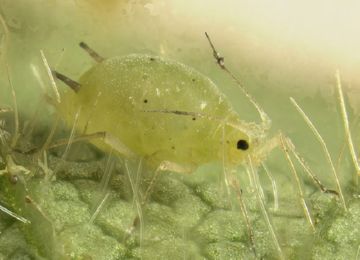

The period of particular activity of aphids is observed in the middle of summer, when wings grow in insects, as a result of which they begin to move much faster. Most of all, aphids prefer young trees, feeding on their leaves, buds and shoots. A tree attacked by aphids cannot develop fully. Its leaves quickly fade and fall, flower buds are delayed in development. As a result, the fruits grow very small and, not having time to ripen to the end, fall.Besides sucking out all the nutrients from the tree, aphids give off a sticky, poisonous liquid, which provides a favorable environment for the emergence of various fungal formations, yeast, viruses. In addition, aphid secretions cover the plants, making it difficult for them to breathe.
Common earwig, European earwig, or tick (Forficula auricularia)
Ordinary earwig
An ordinary earwig, belonging to the order of leather-winged animals, is well known to gardeners and gardeners. The body length is 3.5-5 mm, the front wings are firm, the rear ones are webbed. There are also wingless forms. Its claws located in the back of the body are impressive. The earwig hunts mainly at dusk and at night, and during the day it hides in dark narrow crevices.
By exterminating harmful insects, such as dahlia woodlice, the earwig can damage the delicate young dahlia plants.
In spring and autumn, the female lays up to 100 eggs in a burrow, which she pulls out herself, protects them and takes care of her offspring - first about the eggs, and later about the larvae. Earwigs overwinter in shelters - in the bark of trees, cracks in buildings, in soil, flower pots filled with small shavings or some other material, for example, moss.
Settling in the garden: flower pots filled with wood shavings, moss or hay can be used as shelters. These pots are placed between vegetable crops or hung on trees. For the winter, the pots should be cleaned and refilled in the spring. Digging in the tree trunk circles contributes to the normal vital activity of the insect. Often, earwigs also seek refuge for themselves for the winter under the trees, in its fallen leaves.
Praying mantis (Mantoptera)
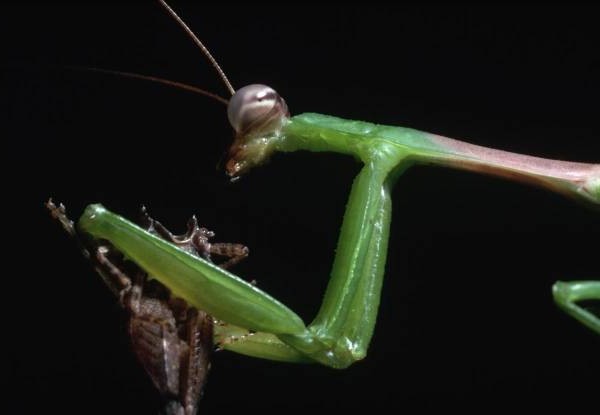

Praying mantis caught a fruit bug
The praying mantis is practically omnivorous in its taste preferences, and the subject of its hunt is not only aphids, mealybugs, thrips, caterpillars, corn bugs, but also small lizards and young snakes.
The female lays from 10 to 400 eggs, which, like cockroaches, she packs in ootheca. Ooteca are hung on the grass or on the branches of trees and bushes. In regions with rather cold winters, it is the ooteca that are the wintering stage.
In the first larval stage, the praying mantis has a worm-like shape, and after leaving the ooteca, it molts and acquires the characteristic appearance of a praying mantis.
Praying Mantis (Mantoptera) Mantis Prey - Mouse Vole Ooteca Praying Mantis
In the middle of the 20th century, attempts were made in the USSR to enhance the useful role of praying mantises in agriculture, using them for biological pest control. In the United States and some South Asian regions, praying mantises are kept at home as fly exterminators, and mantises are being sold to farmers to settle in their gardens. Currently, praying mantises are one of the most popular domestic insects.
Phytoseiulus
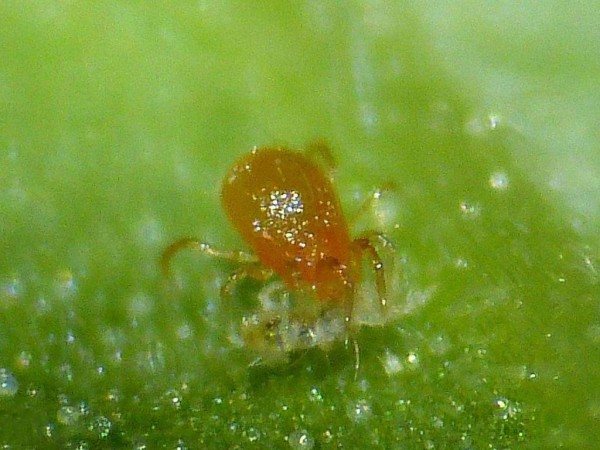

Phytoseiulus
A predator mite that destroys spider mites. The peculiarities of nutrition and reproduction of phytoseiulus lead to the rapid destruction of the bulk of the pest. The predator is especially effective at high air humidity and moderate temperatures.
Adult females lay up to 6 eggs per day; in their entire life, they bring up to 100 eggs. Eggs are oval. The color of the eggs is milky white, with a yellow tint.
The eggs hatch yellowish-orange larvae with six pairs of legs. The body length of the larvae is approximately 0.2 millimeters. The larvae are inactive, they do not eat anything. The larva turns into a nymph without feeding.
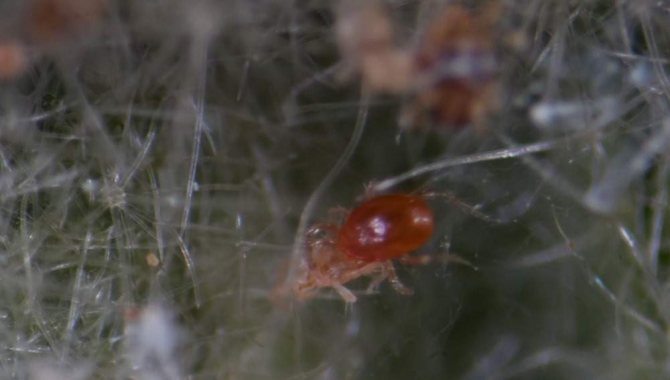

Phytoseiulus
The nymph has 4 pairs of legs, she actively moves. Over time, the nymph turns into a mobile deutonymph, and the next stage is an adult.
The body color can be different: orange, cherry or dark red. The limbs are specially designed so that the pincers can slide between the spider webs. Predators are adult phytoseiulus nymphs and deutonymphs, regardless of gender.Phytoseiulus feed not only on adult spider mites, but also on their eggs.
They are bred for vegetable crops in greenhouses. Phytoseiulus are irreplaceable protectors of tomato, sweet pepper, eggplant, strawberry, melon and ornamental plants.
Phytoseiulus destroy pests at any stage of development. The great advantage is the high activity of these mites and the ease of their reproduction. The timing of the destruction of parasites depends on the number of predators.
Pest of cereals and legumes
Striped root weevil
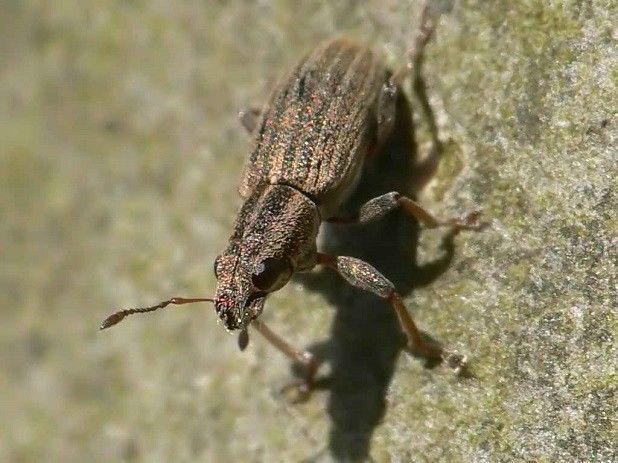

Pest of annual and perennial crops: peas, beans; perennial types of legumes.
Beetles hibernate shallowly in the soil and under vegetation debris in fields with perennial legume grasses. They come out in droves at the end of April.
Control measures: Early sowing of peas. Plant legumes in isolation from perennial crops. After harvesting the peas, plowing the field. Spraying of crops with permitted types of insecticides in the germination phase.
Continuation of the article: photo of a weevil.
Pea moth
Pest of peas, lentils.
Caterpillars overwinter in the soil in cocoons. Pupate in April.
Control measures: Carrying out autumn plowing, adherence to optimal sowing dates, timely harvesting of grain legumes. In case of mass defeat - the use of insecticides in time before the appearance of caterpillars.
Don't forget to check out the article on vegetable pests!

